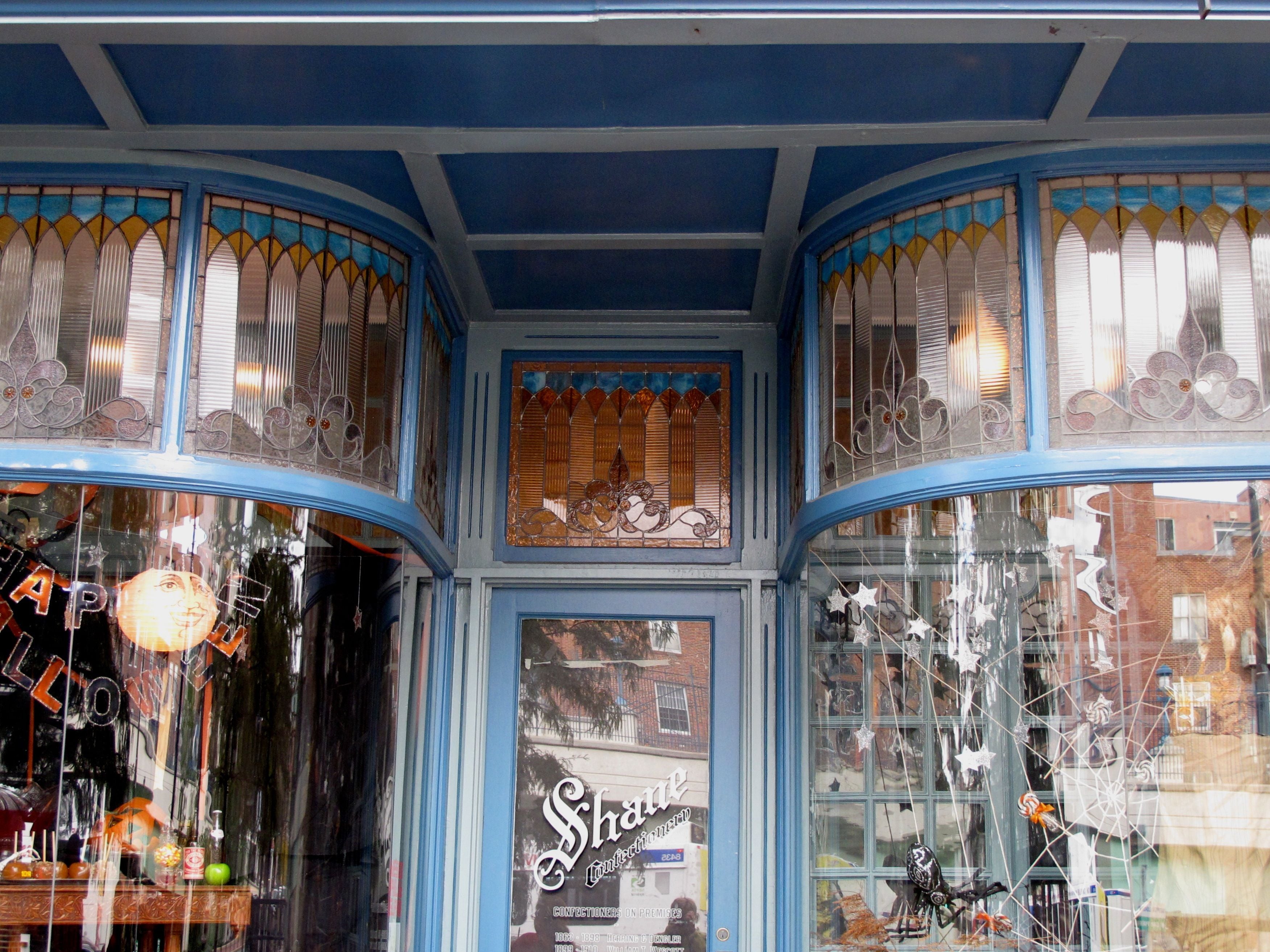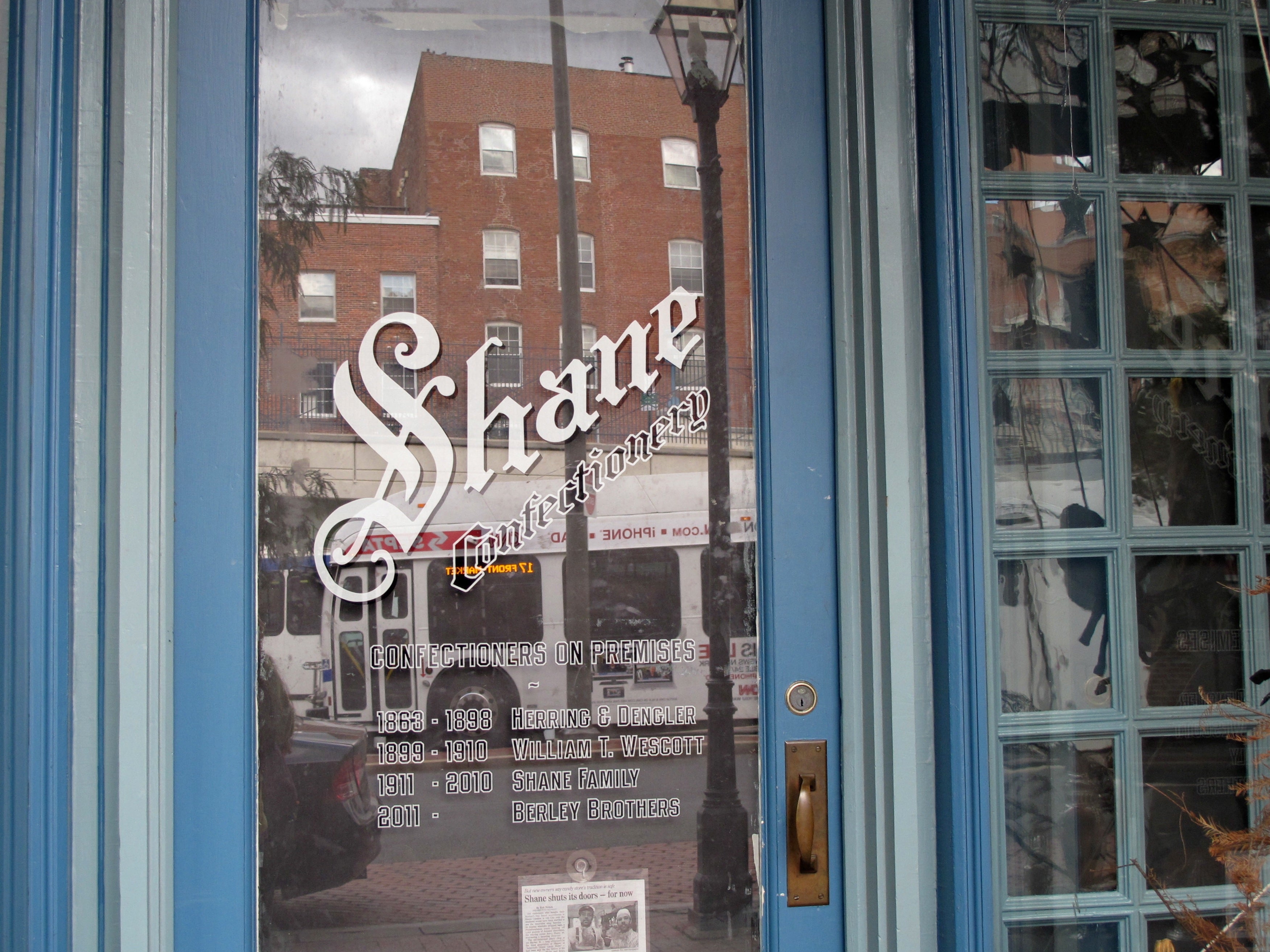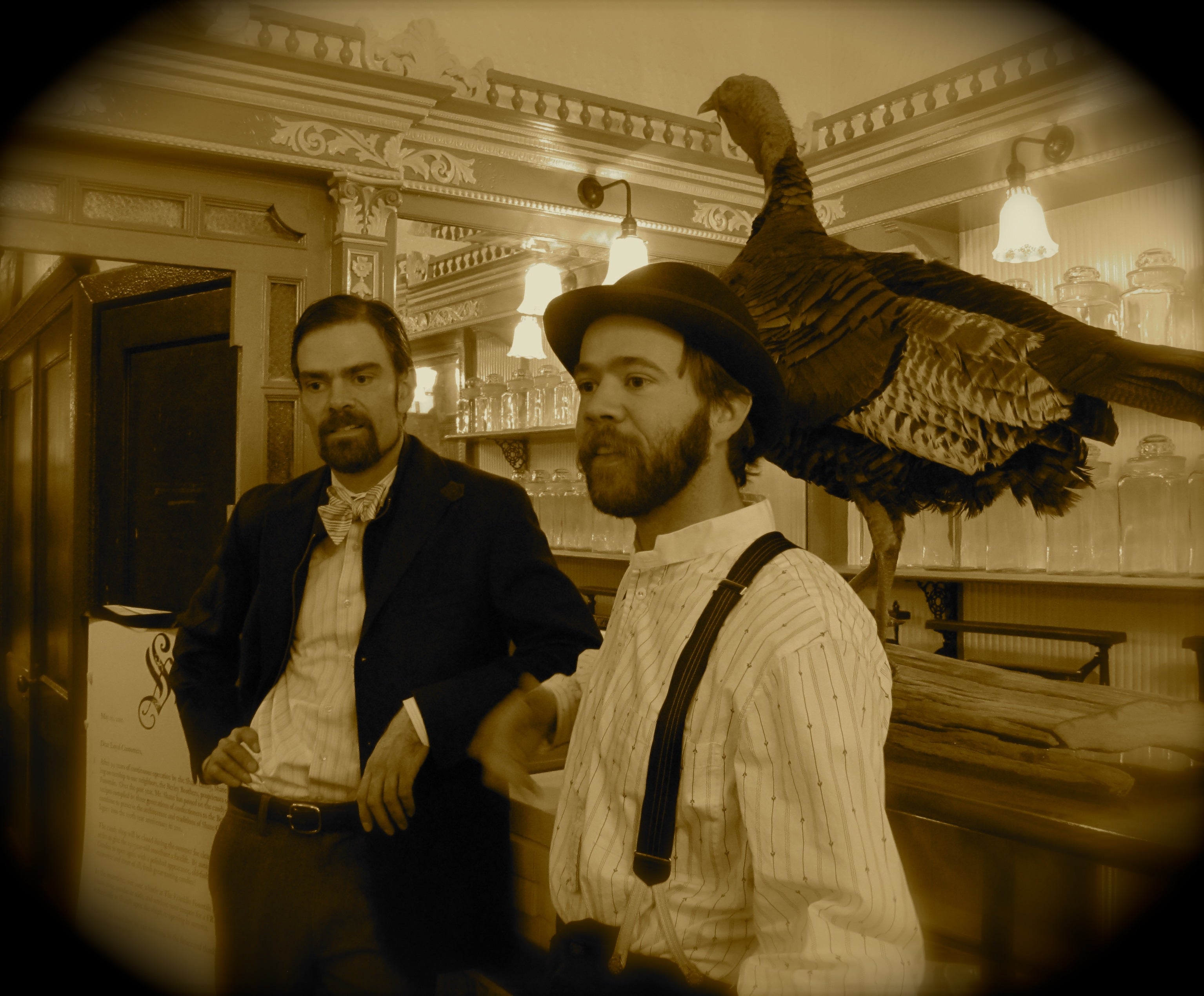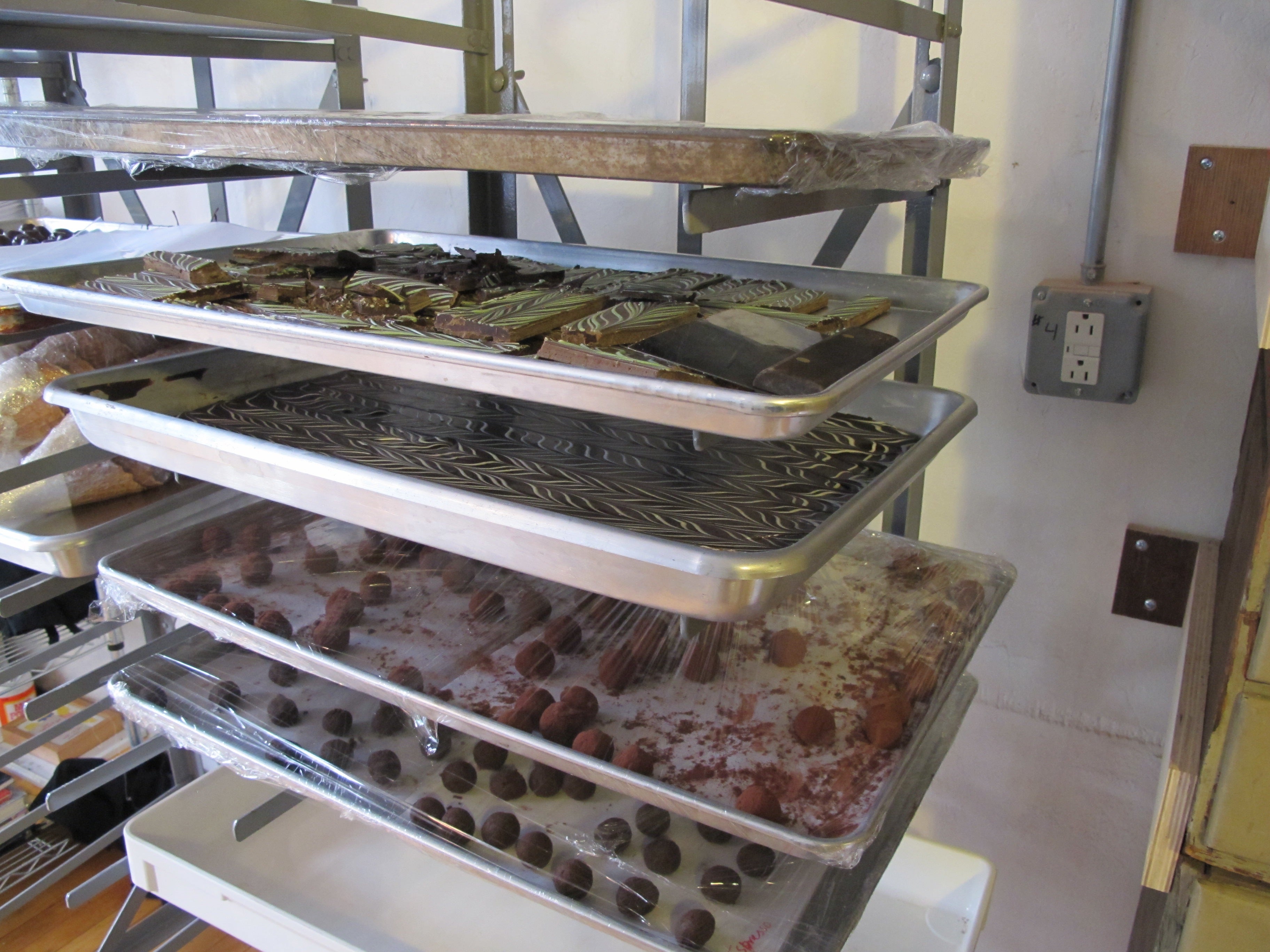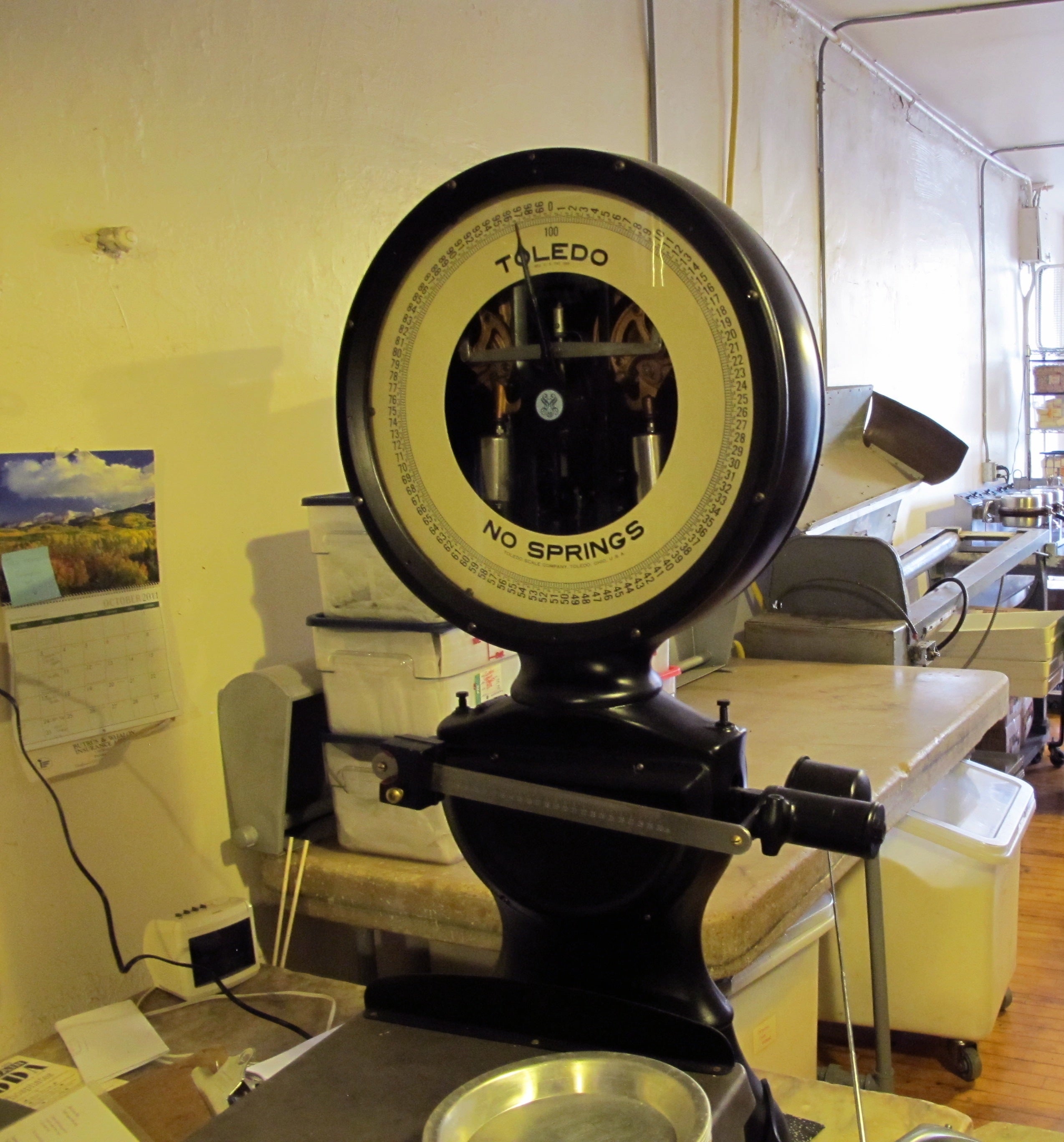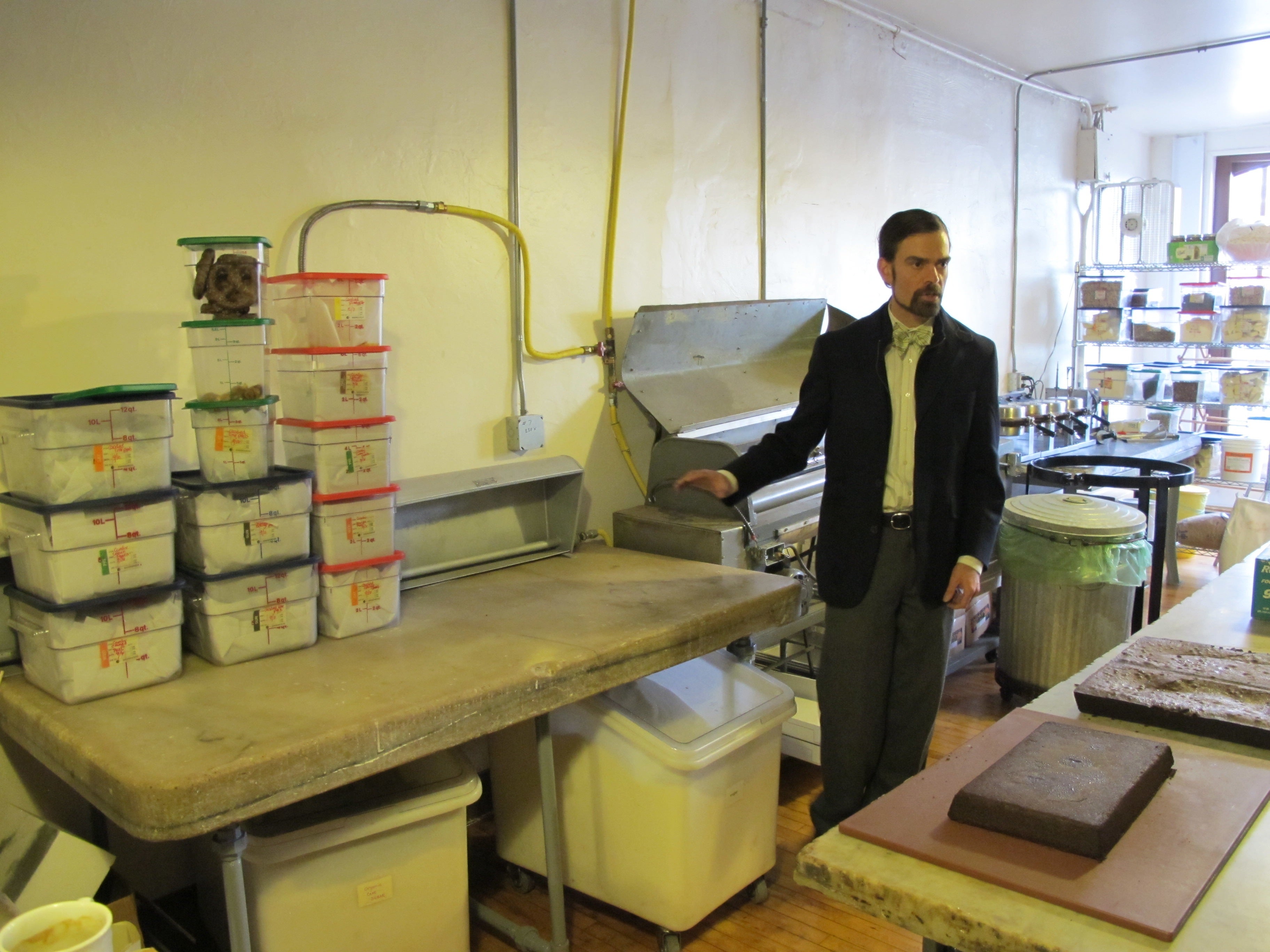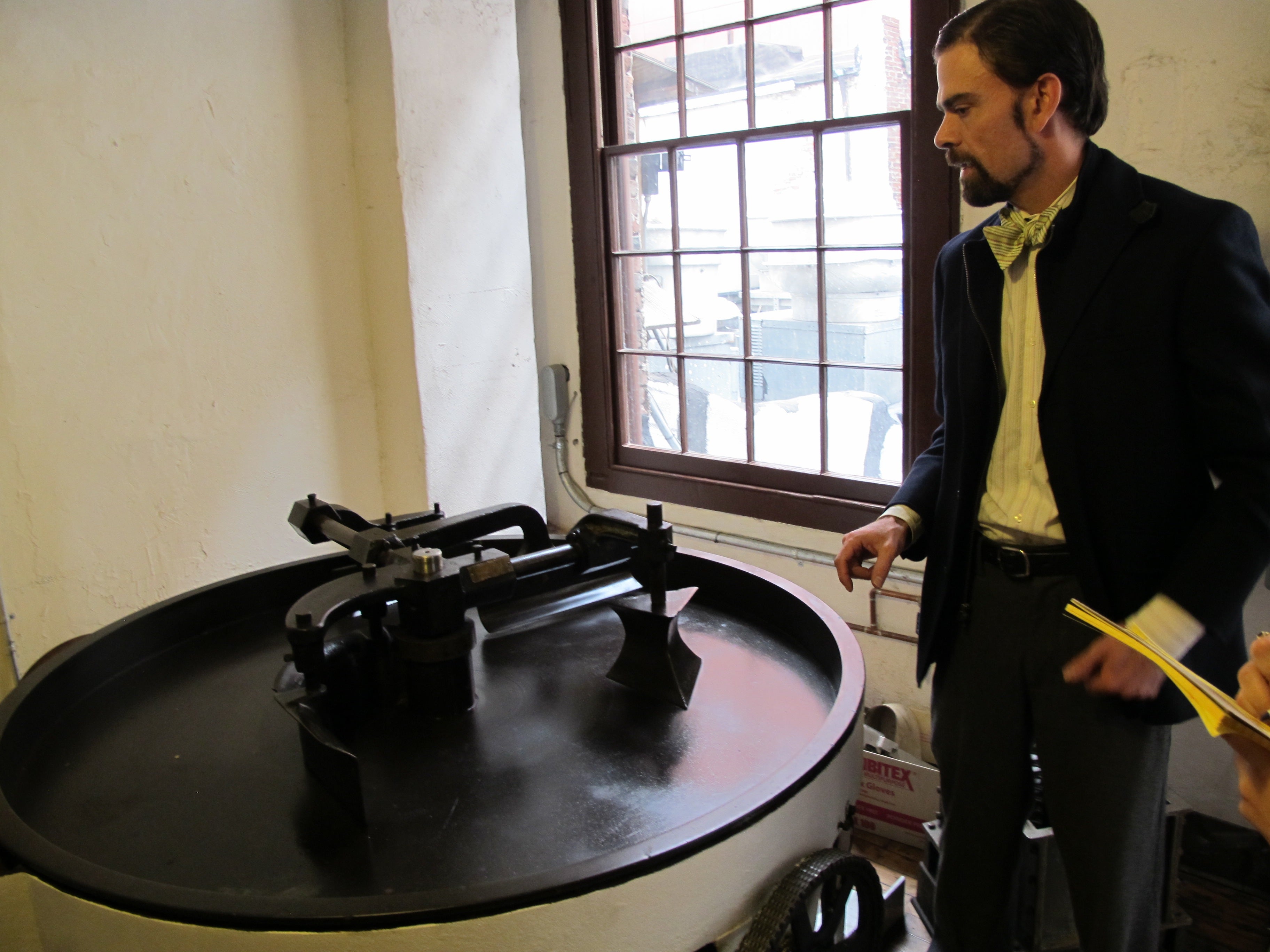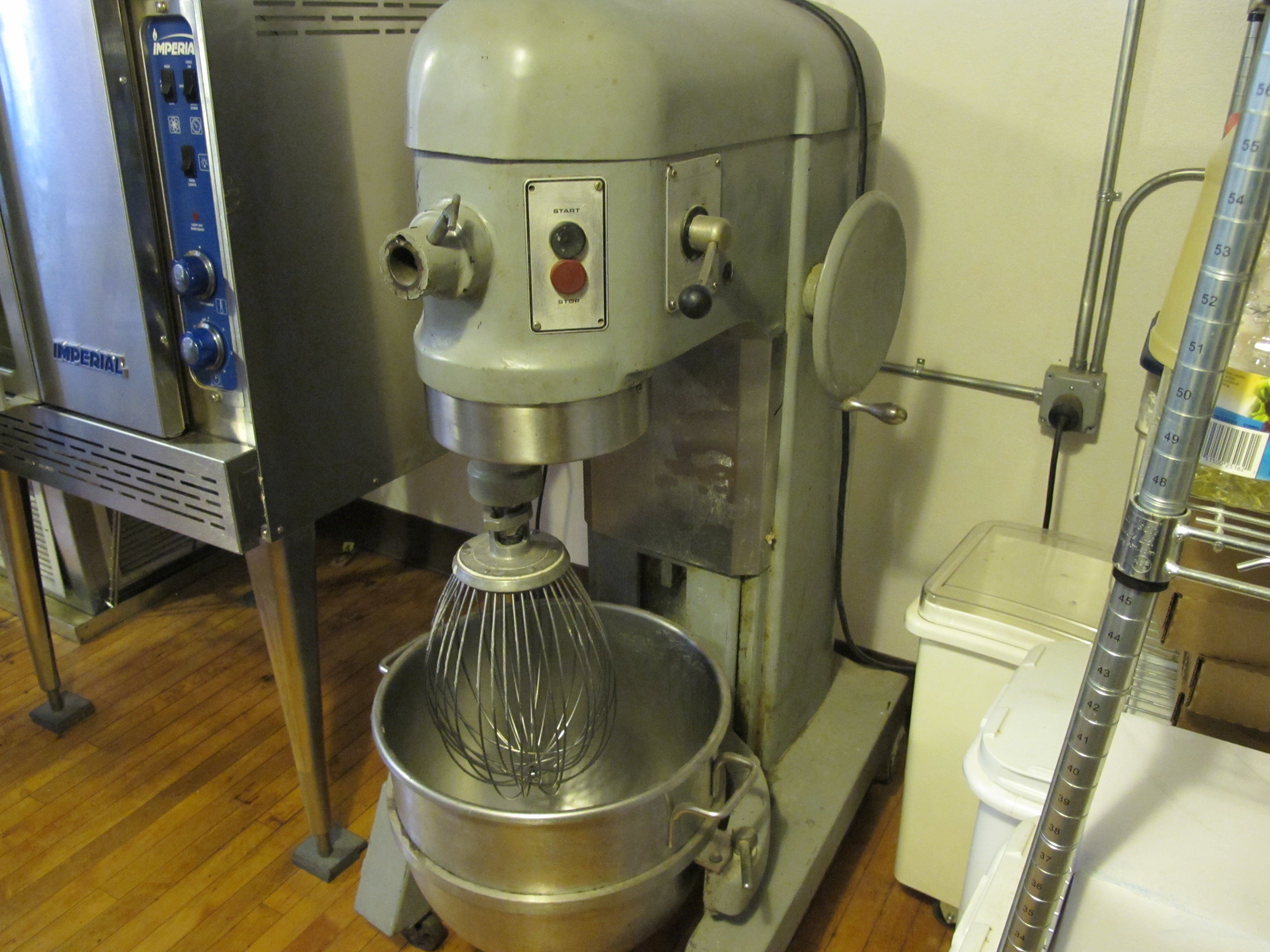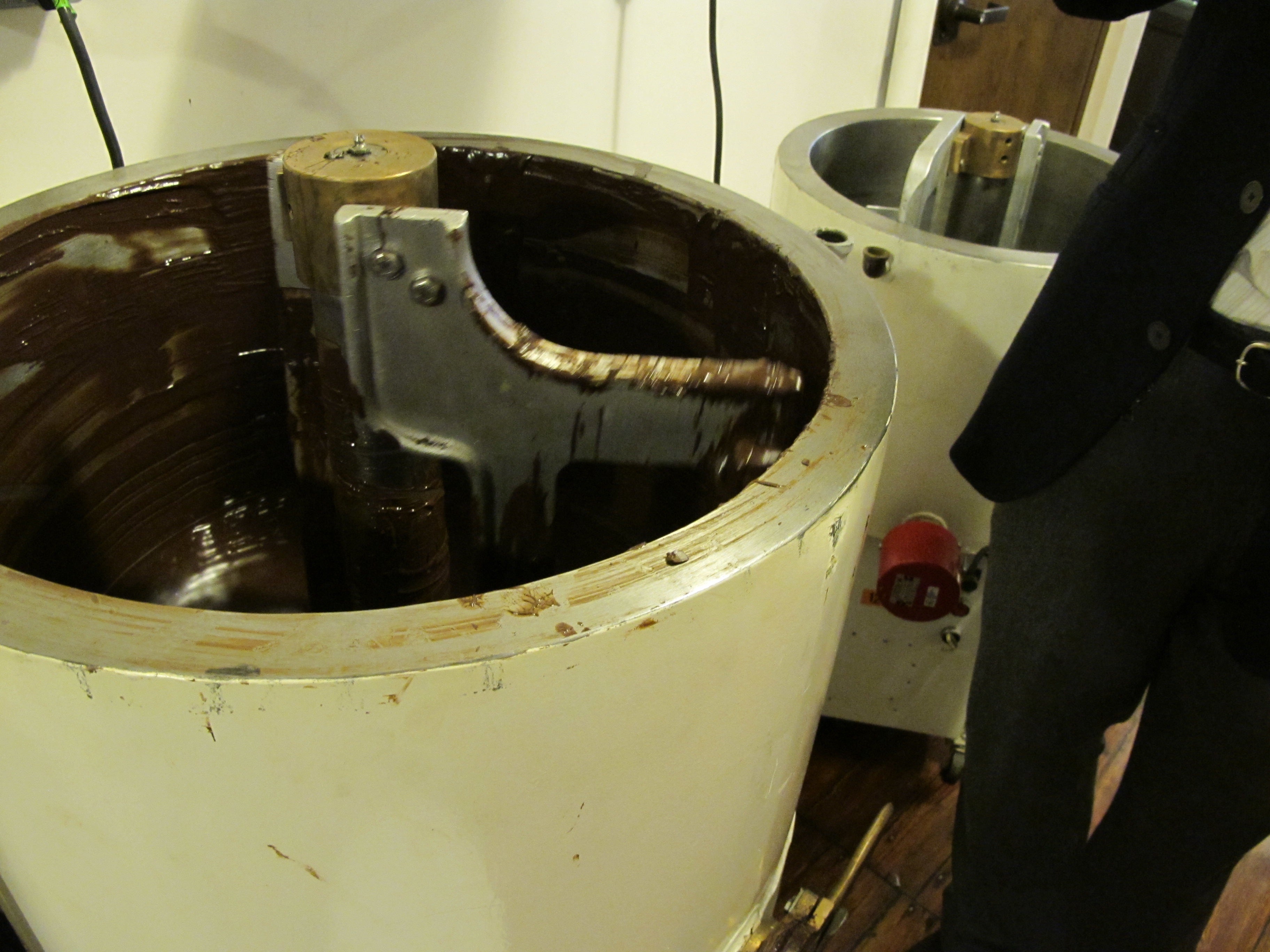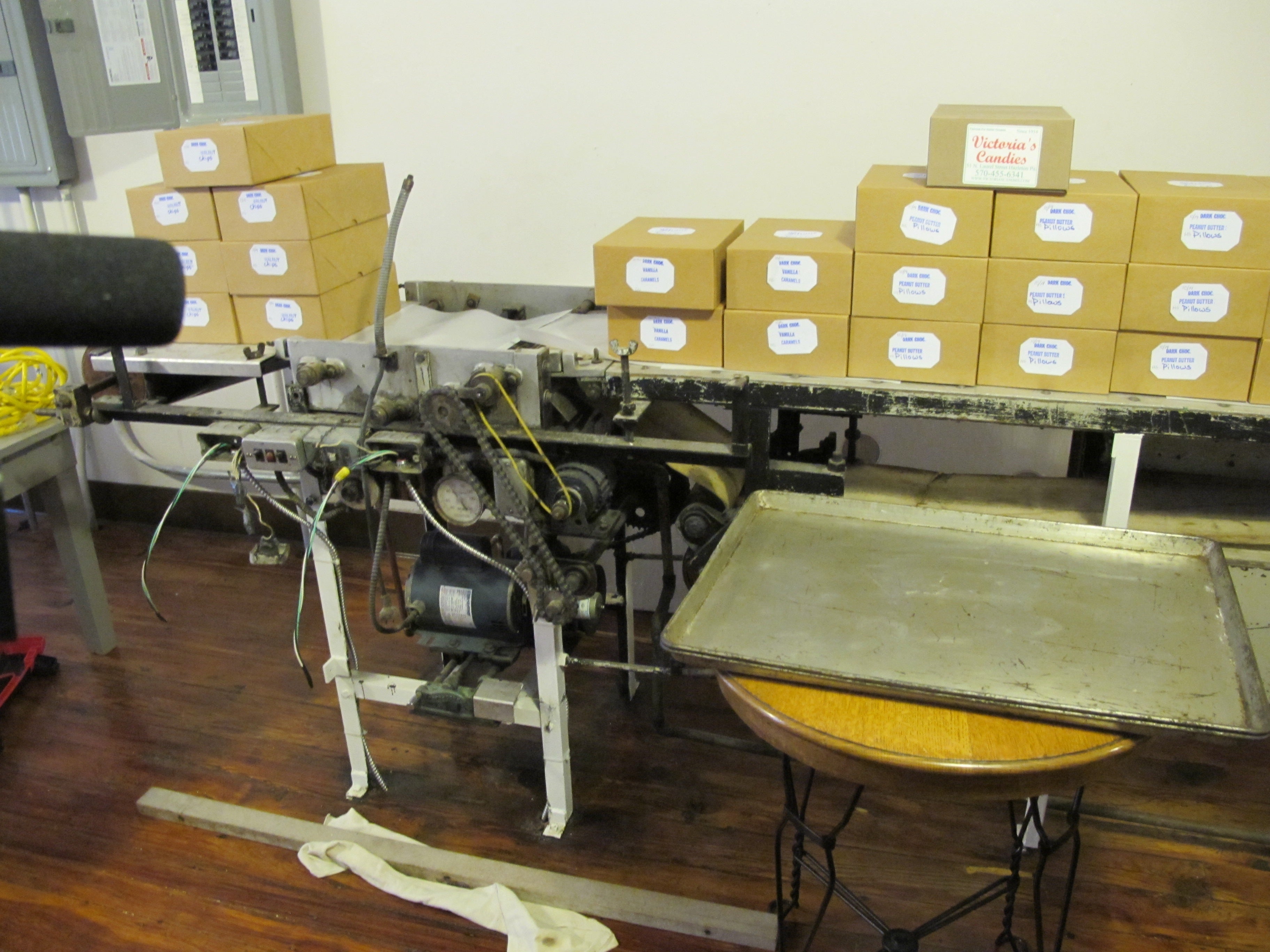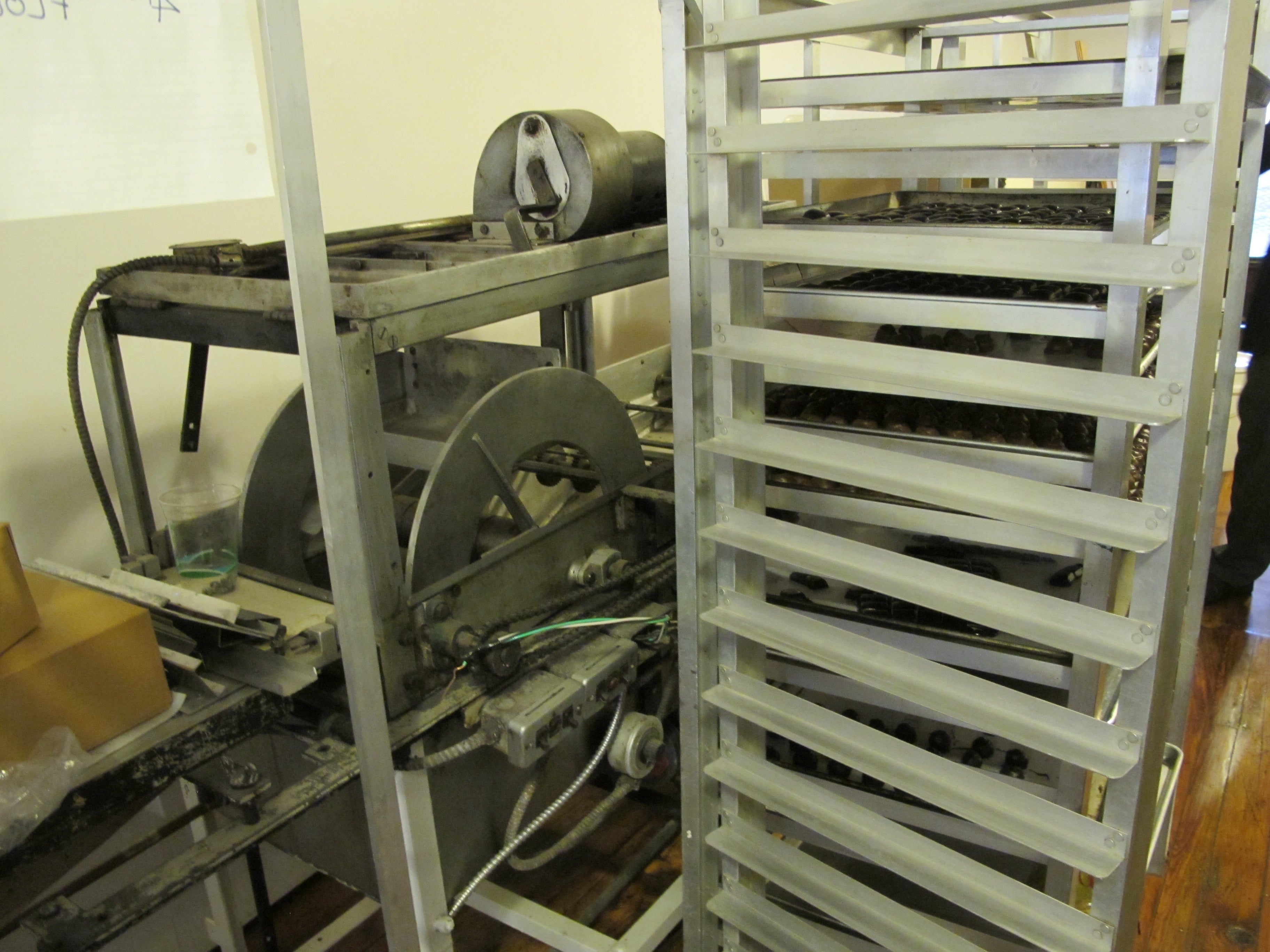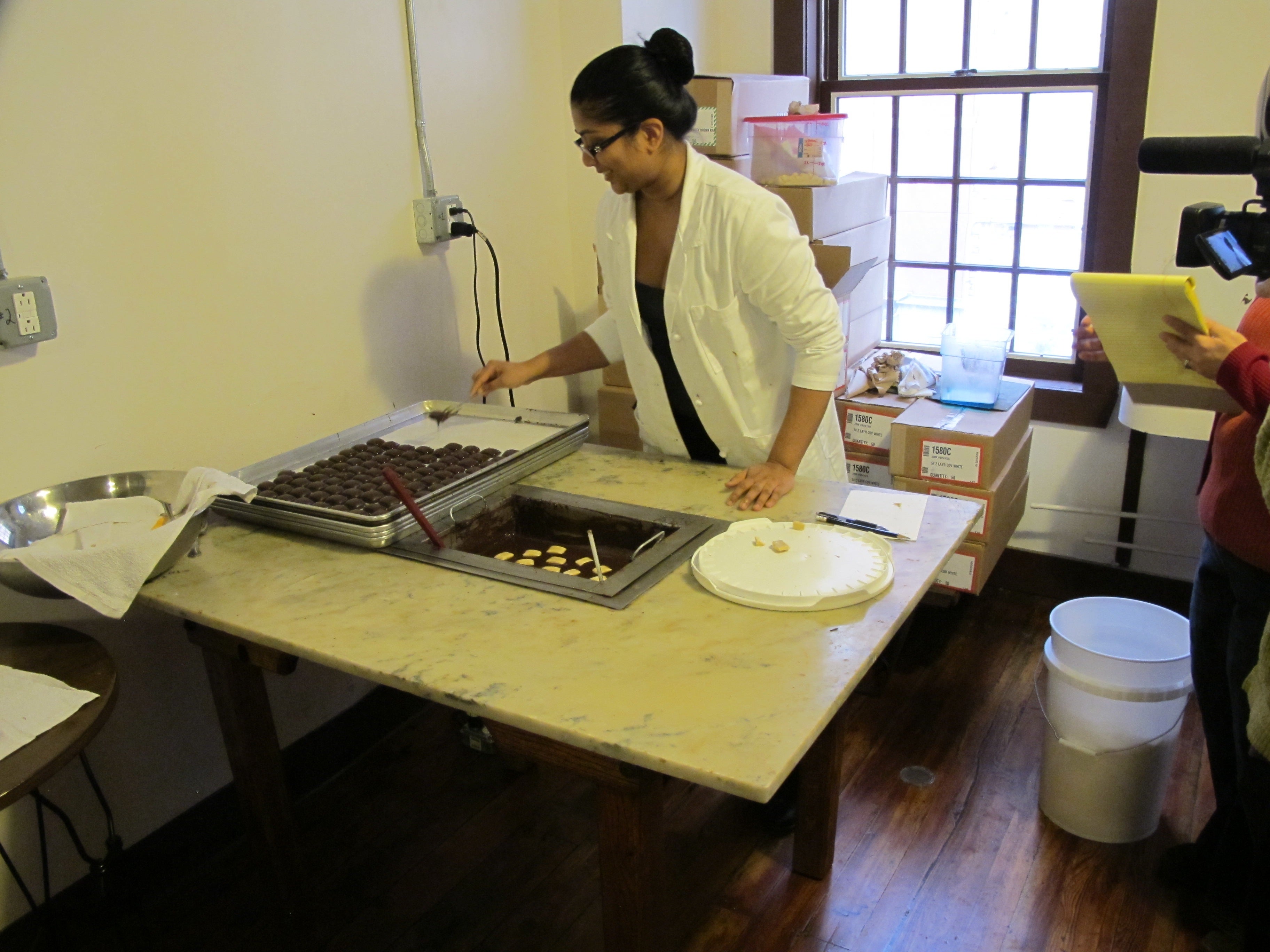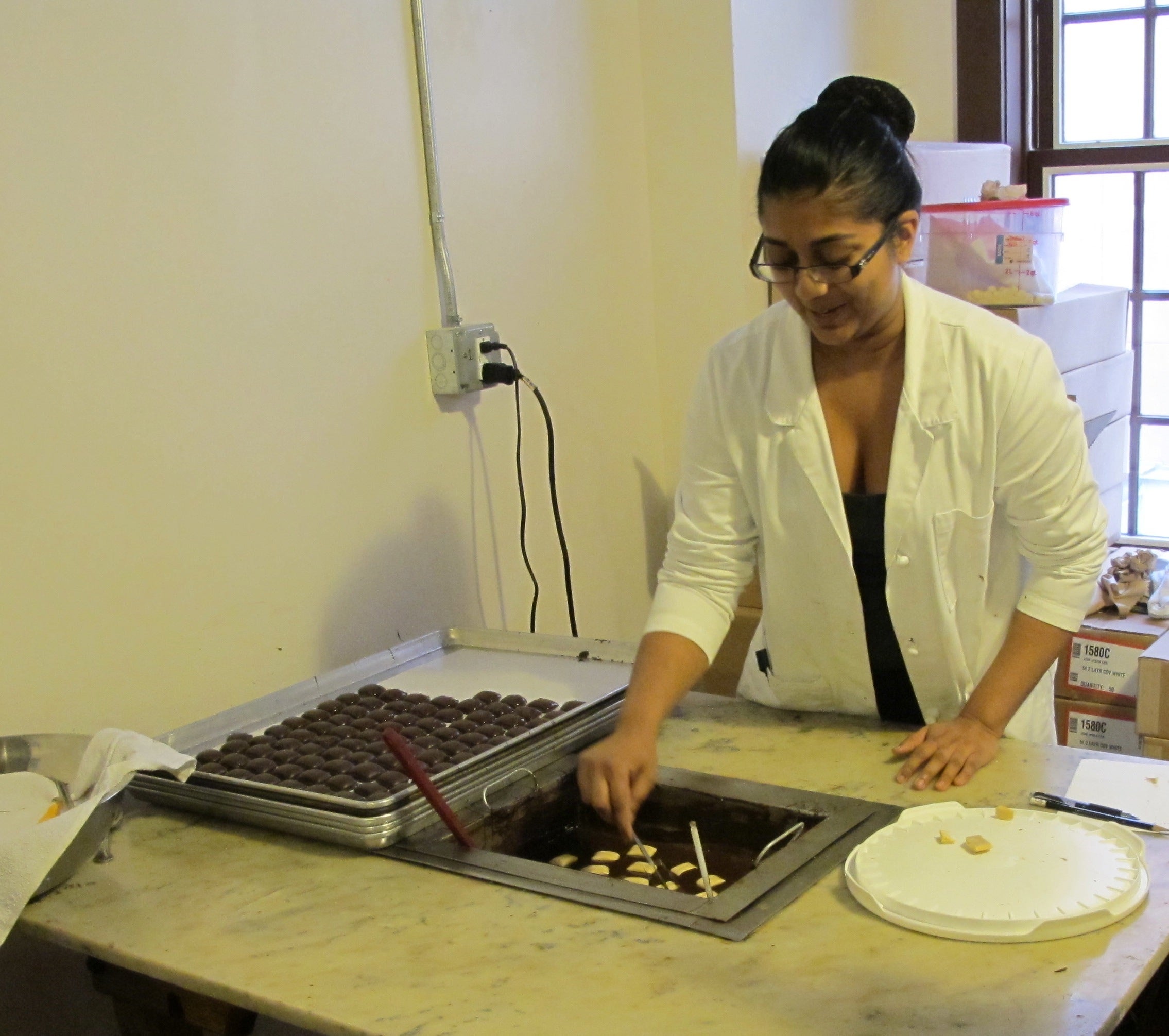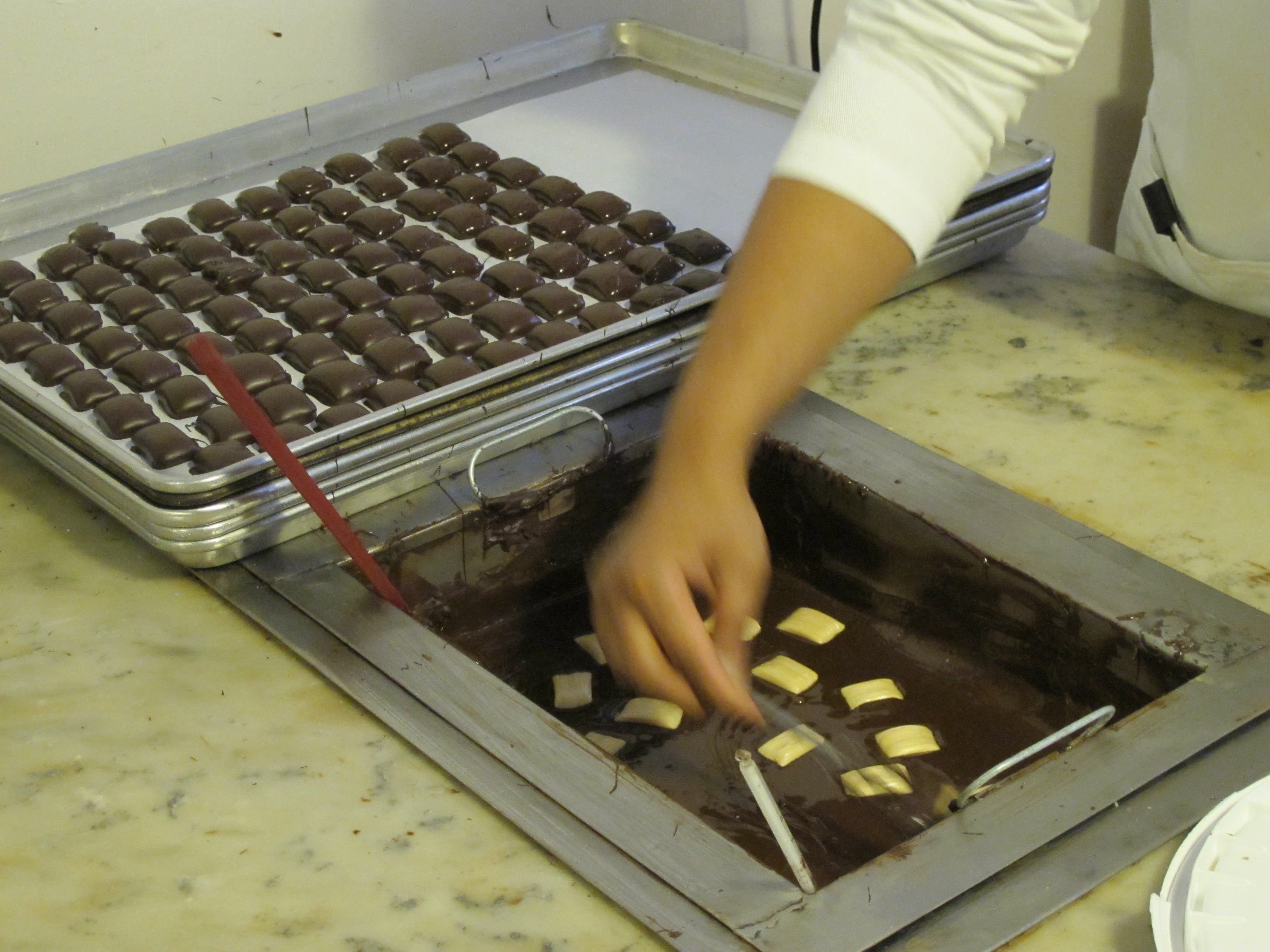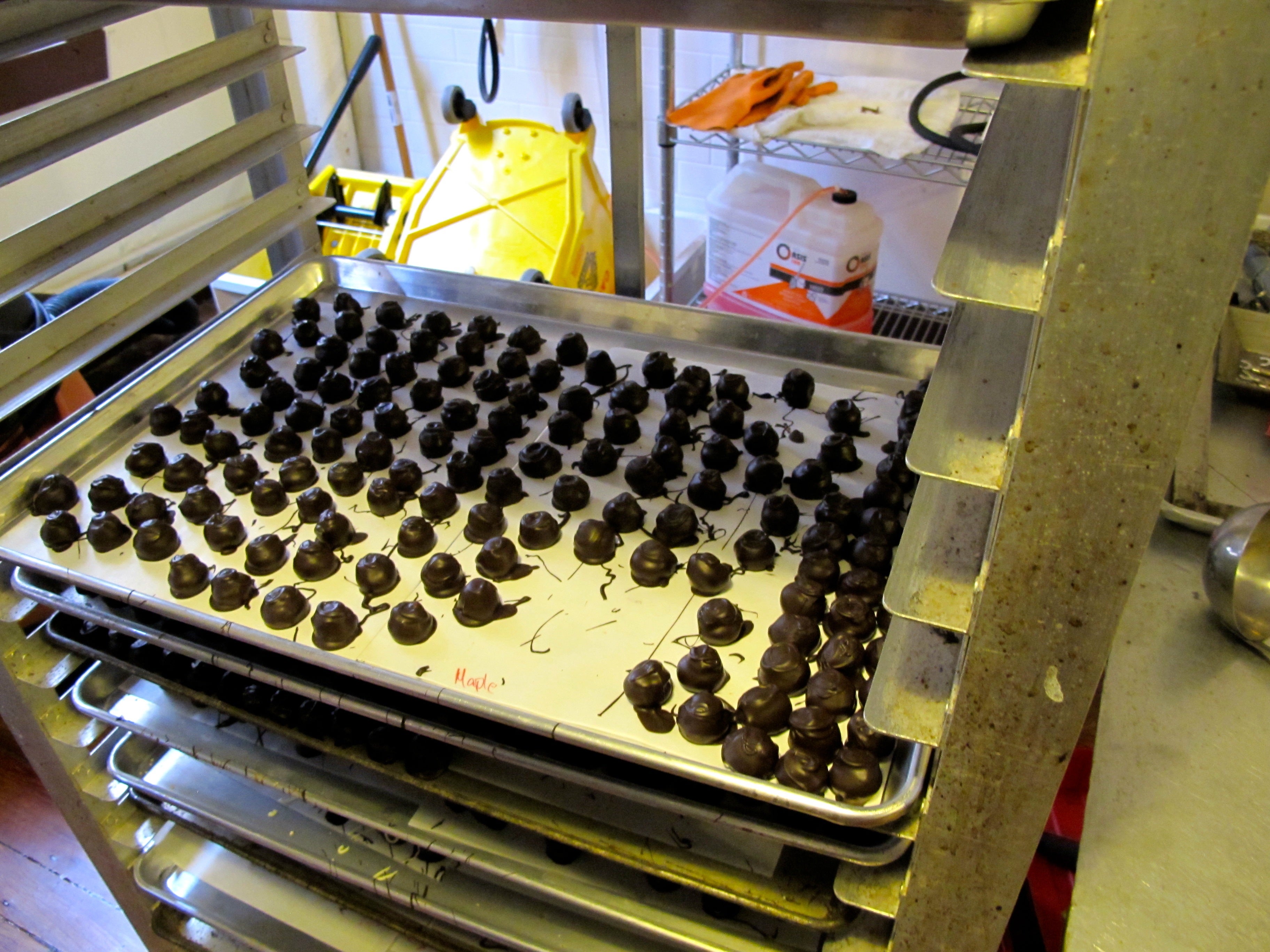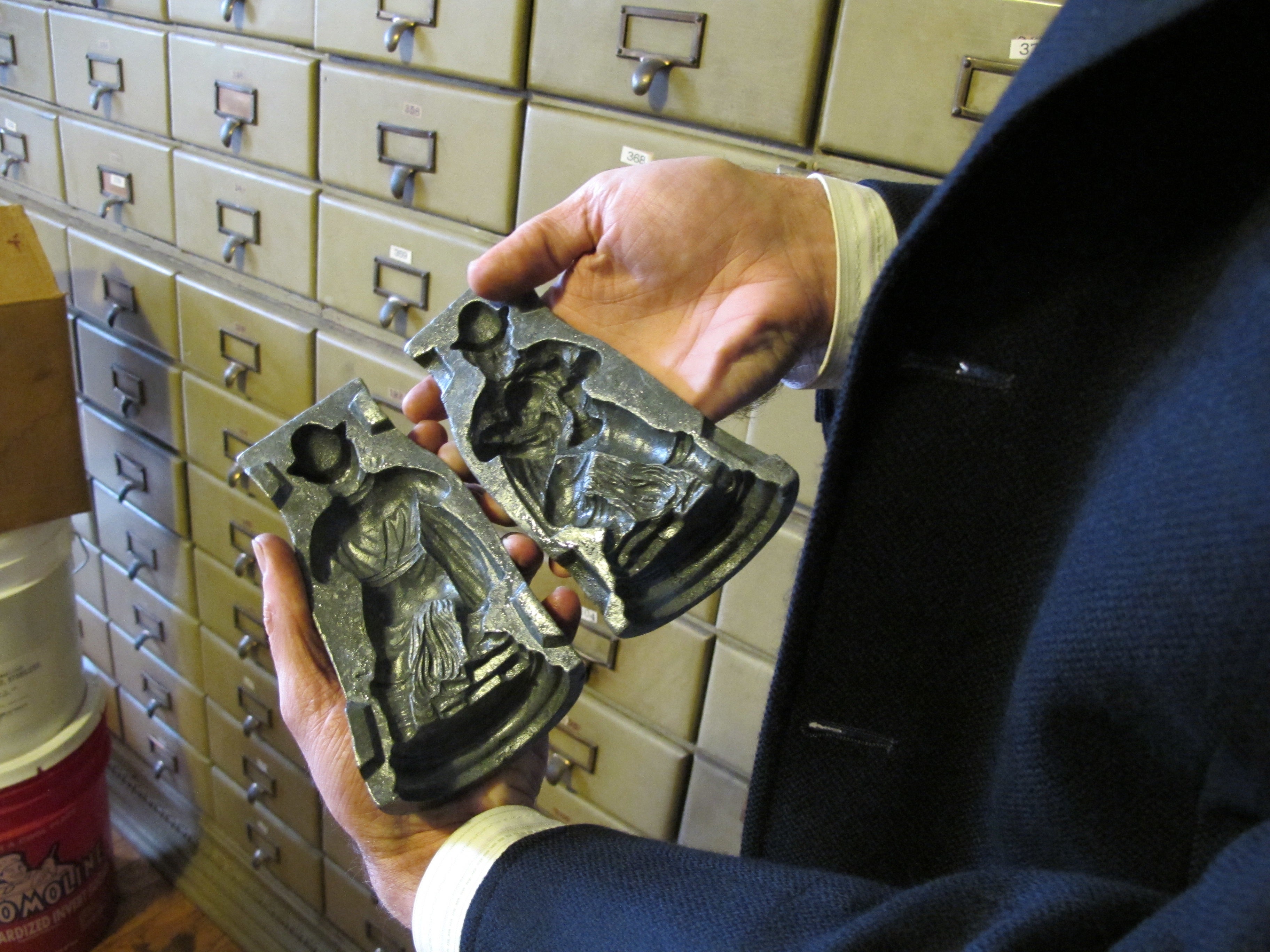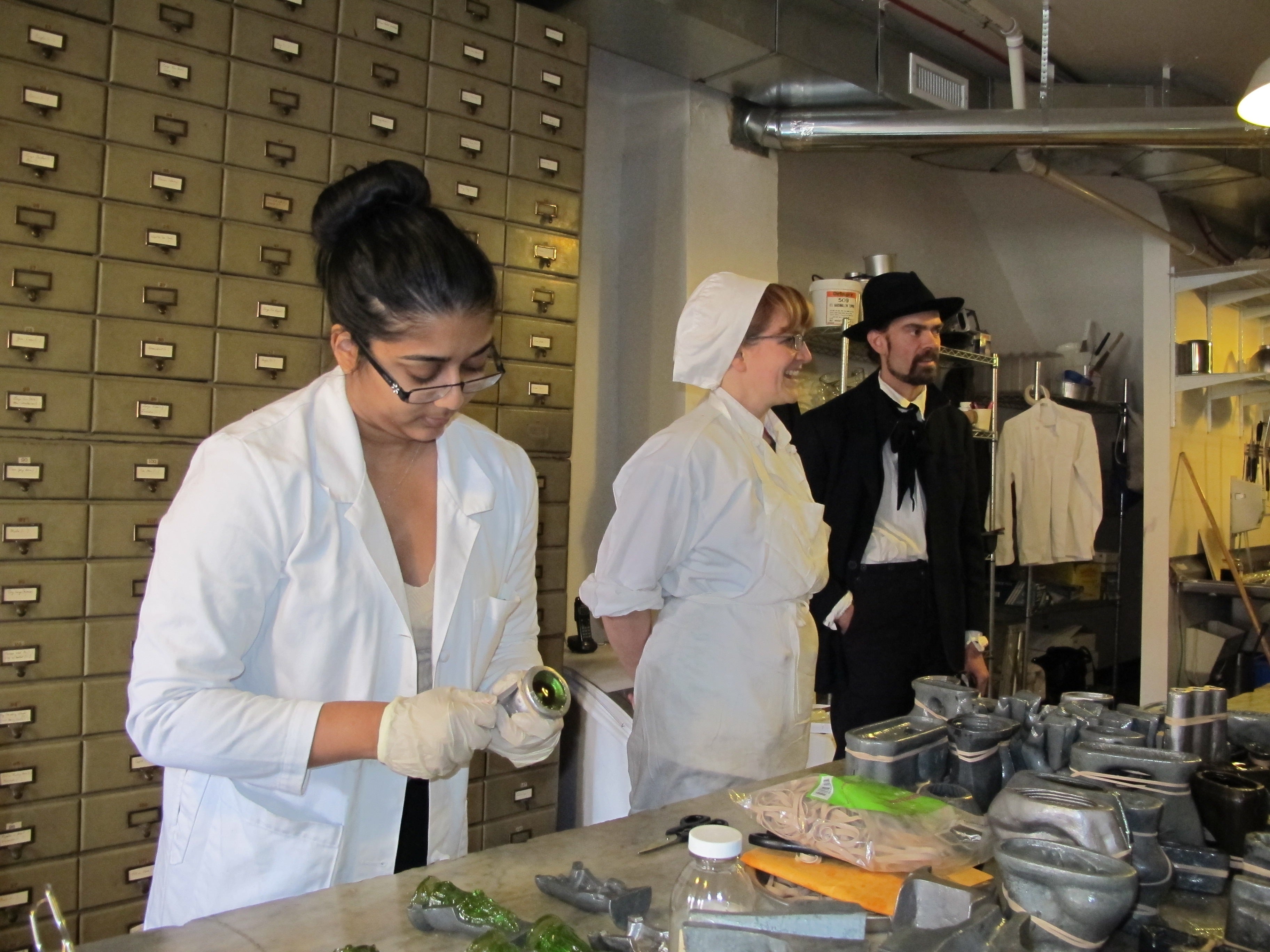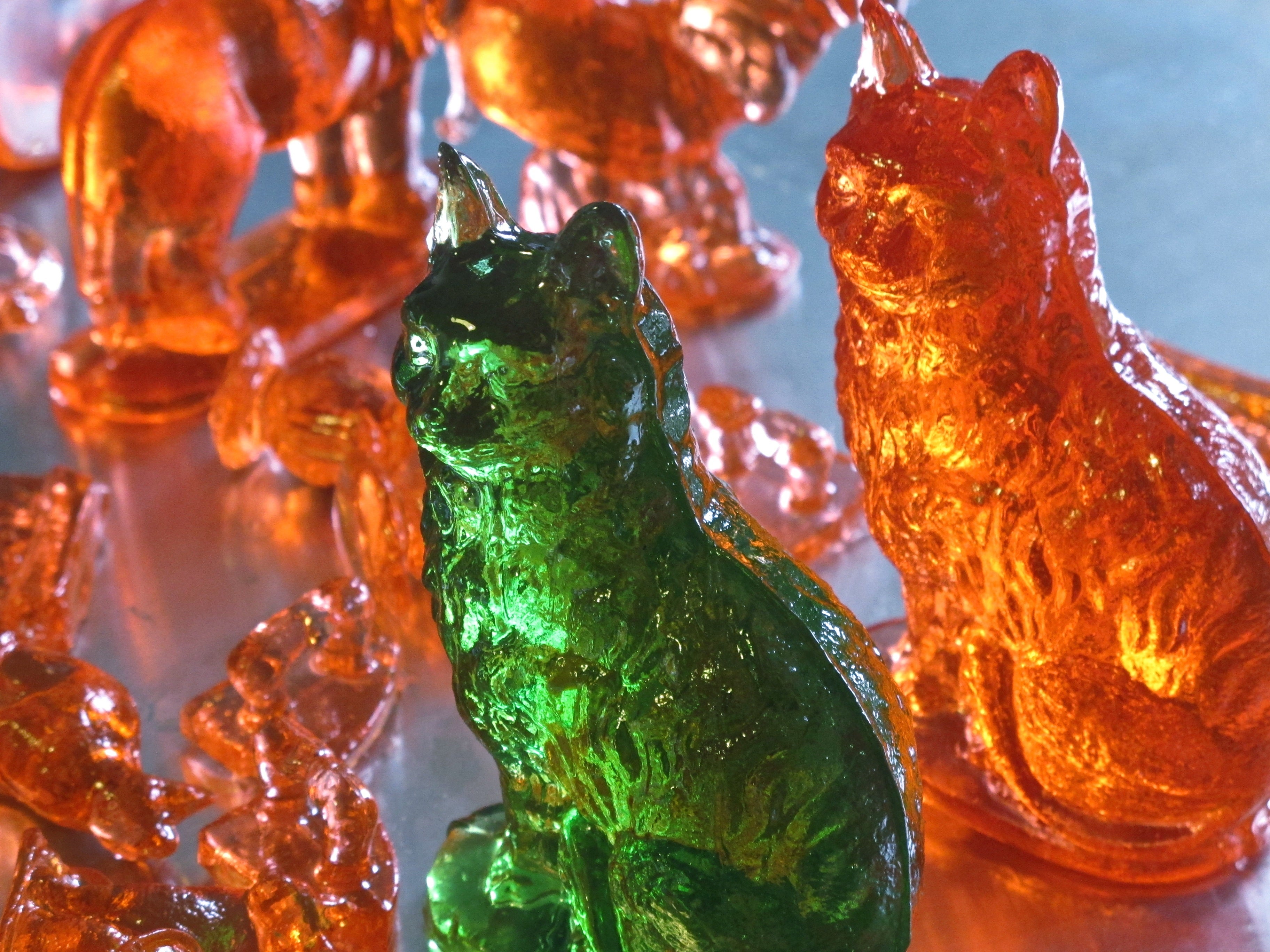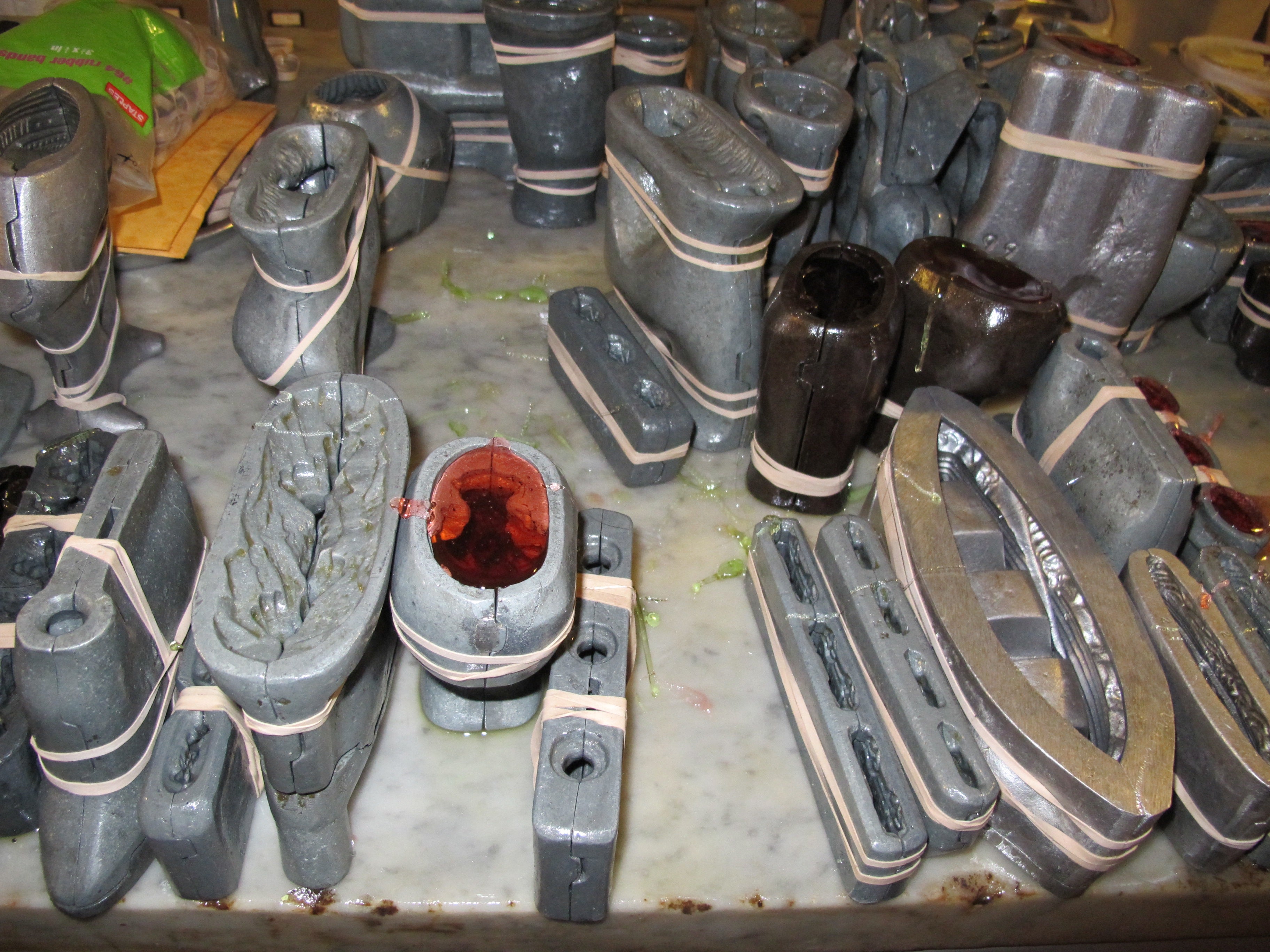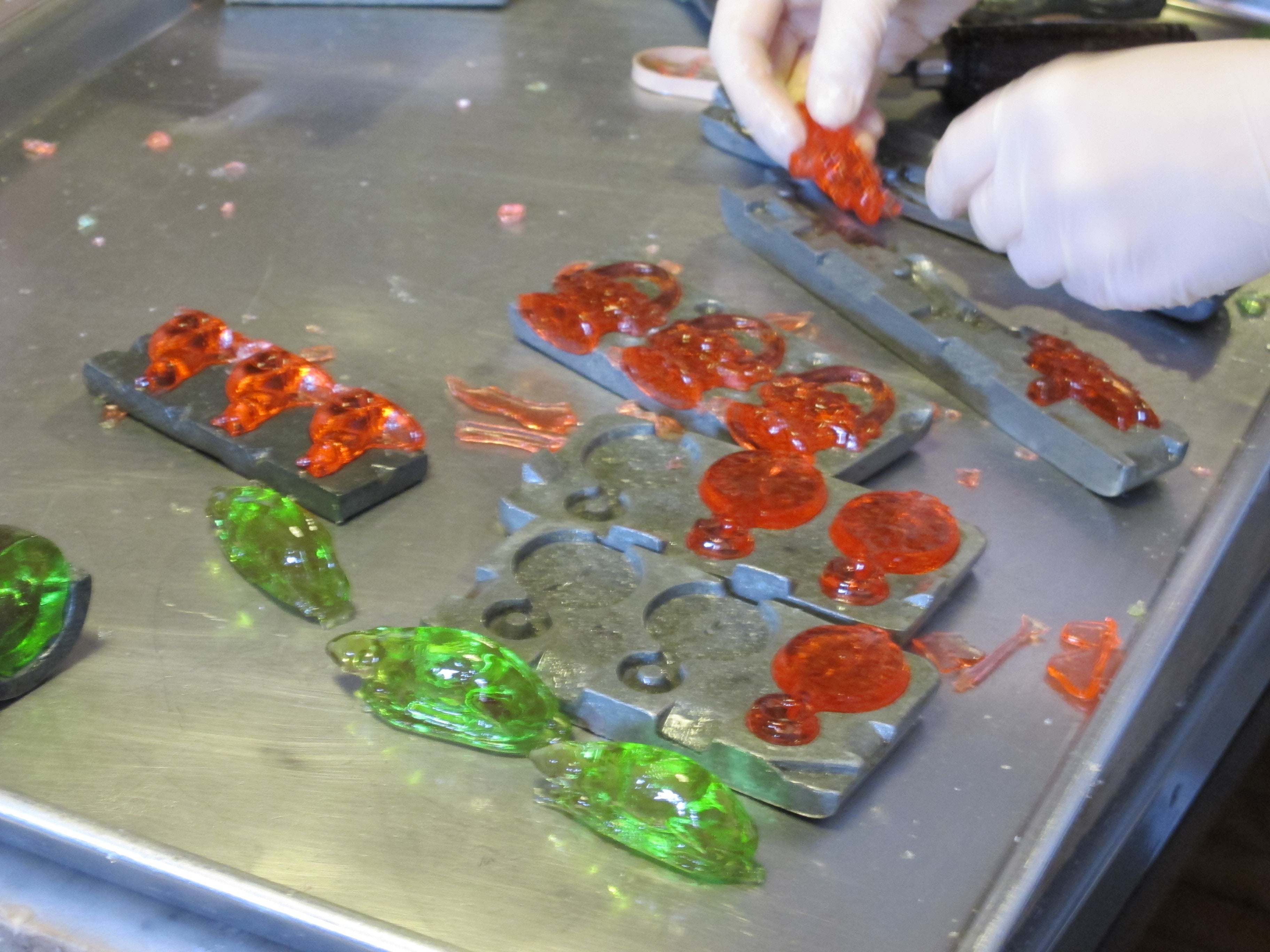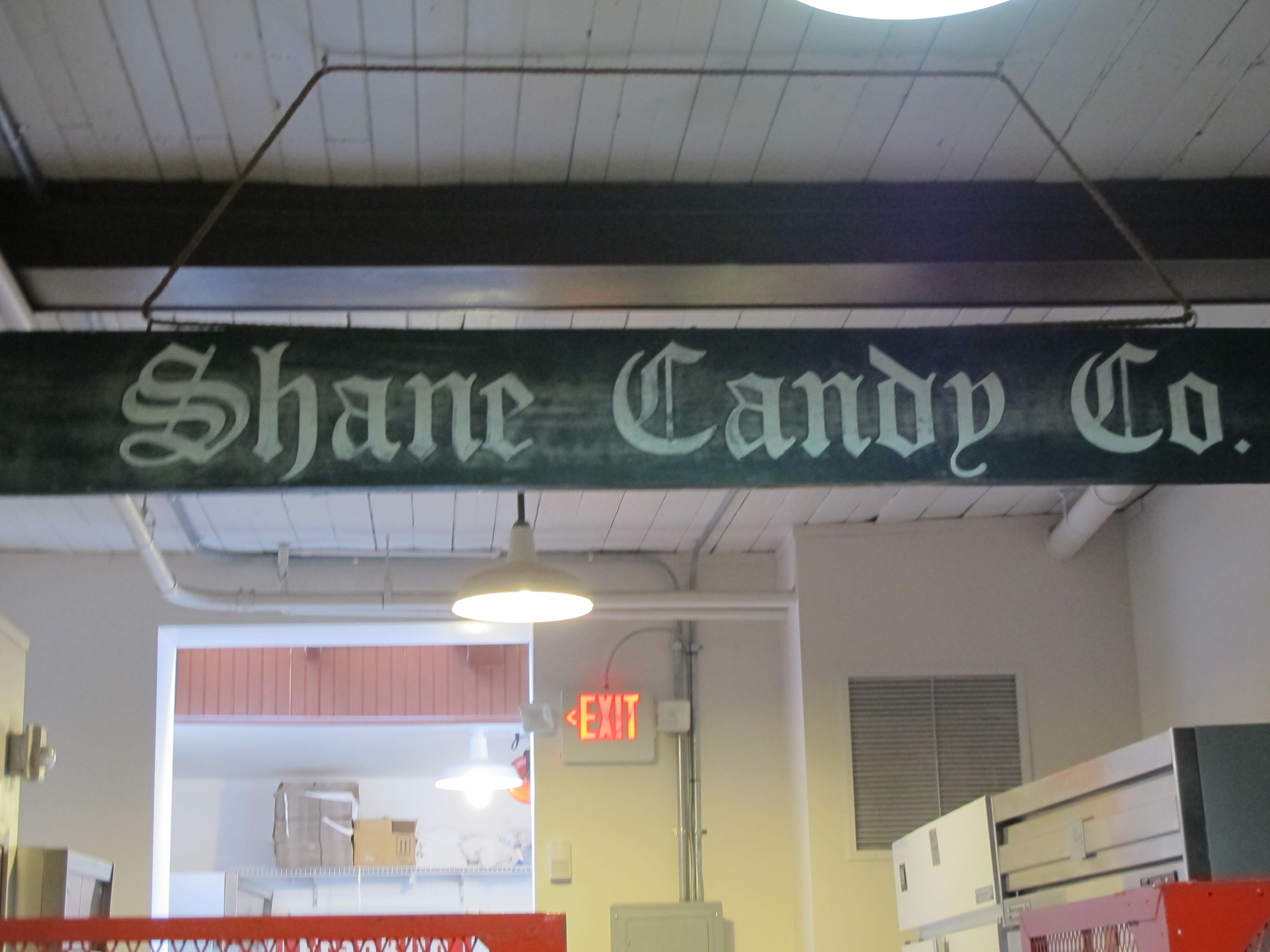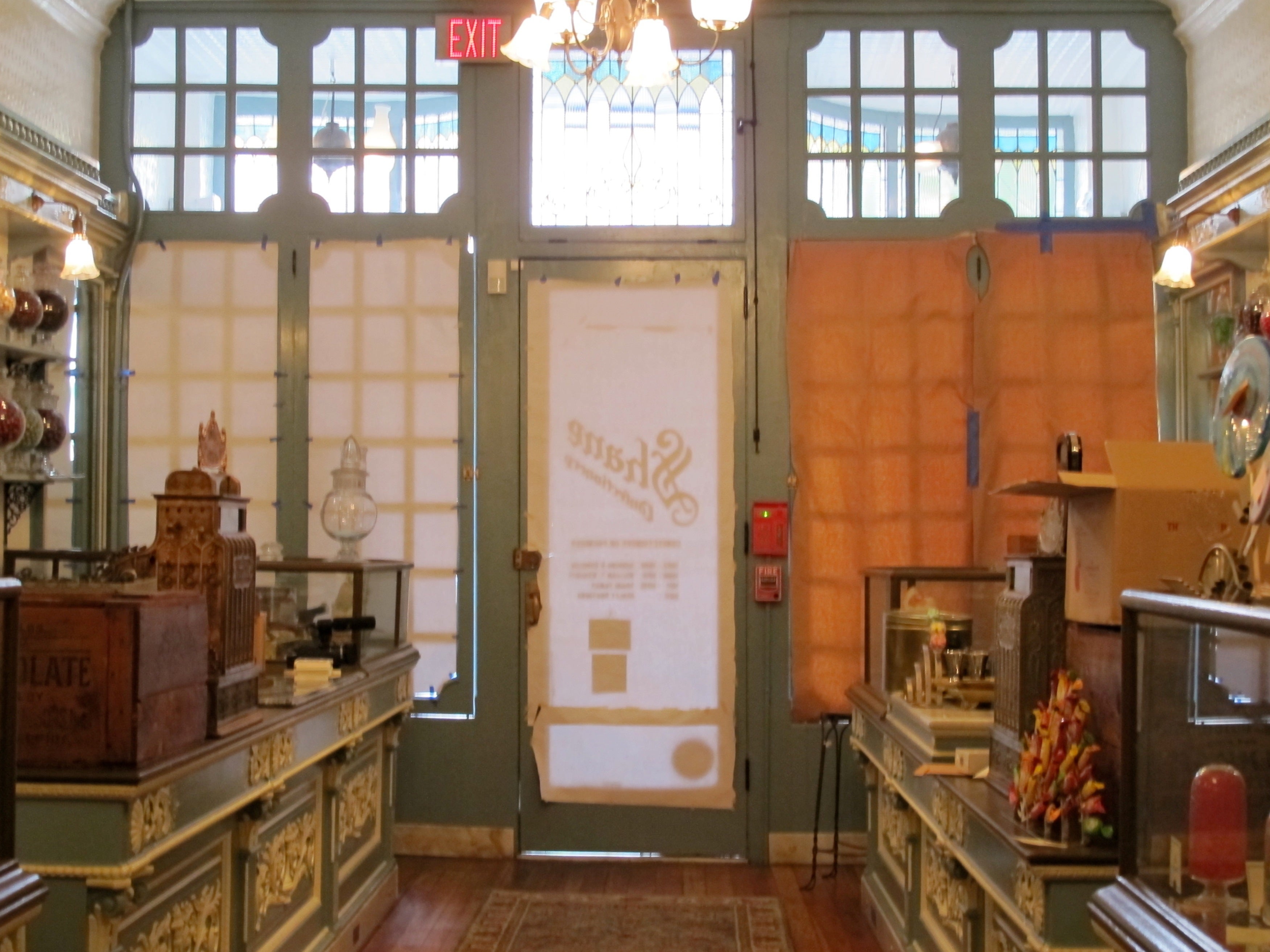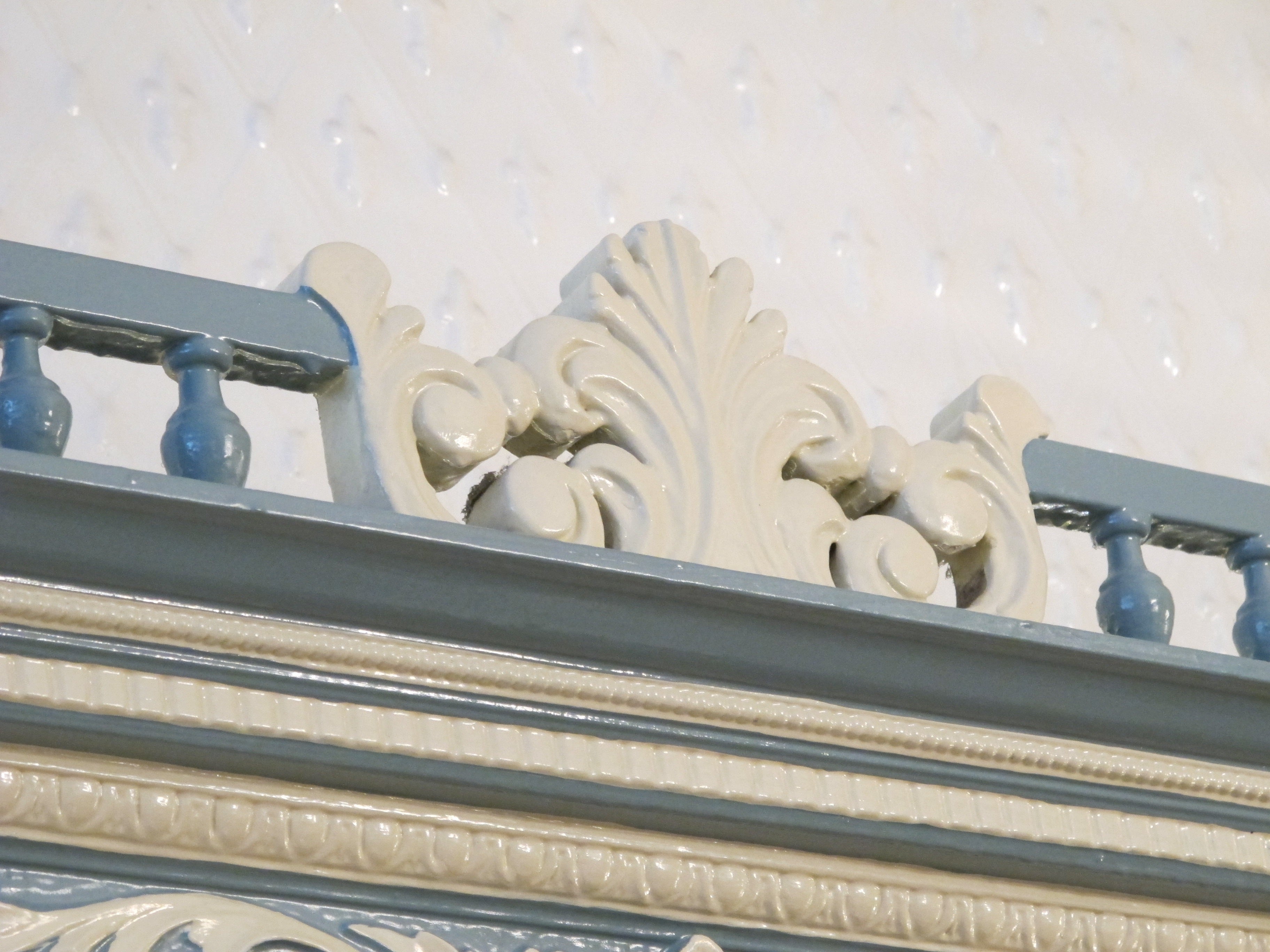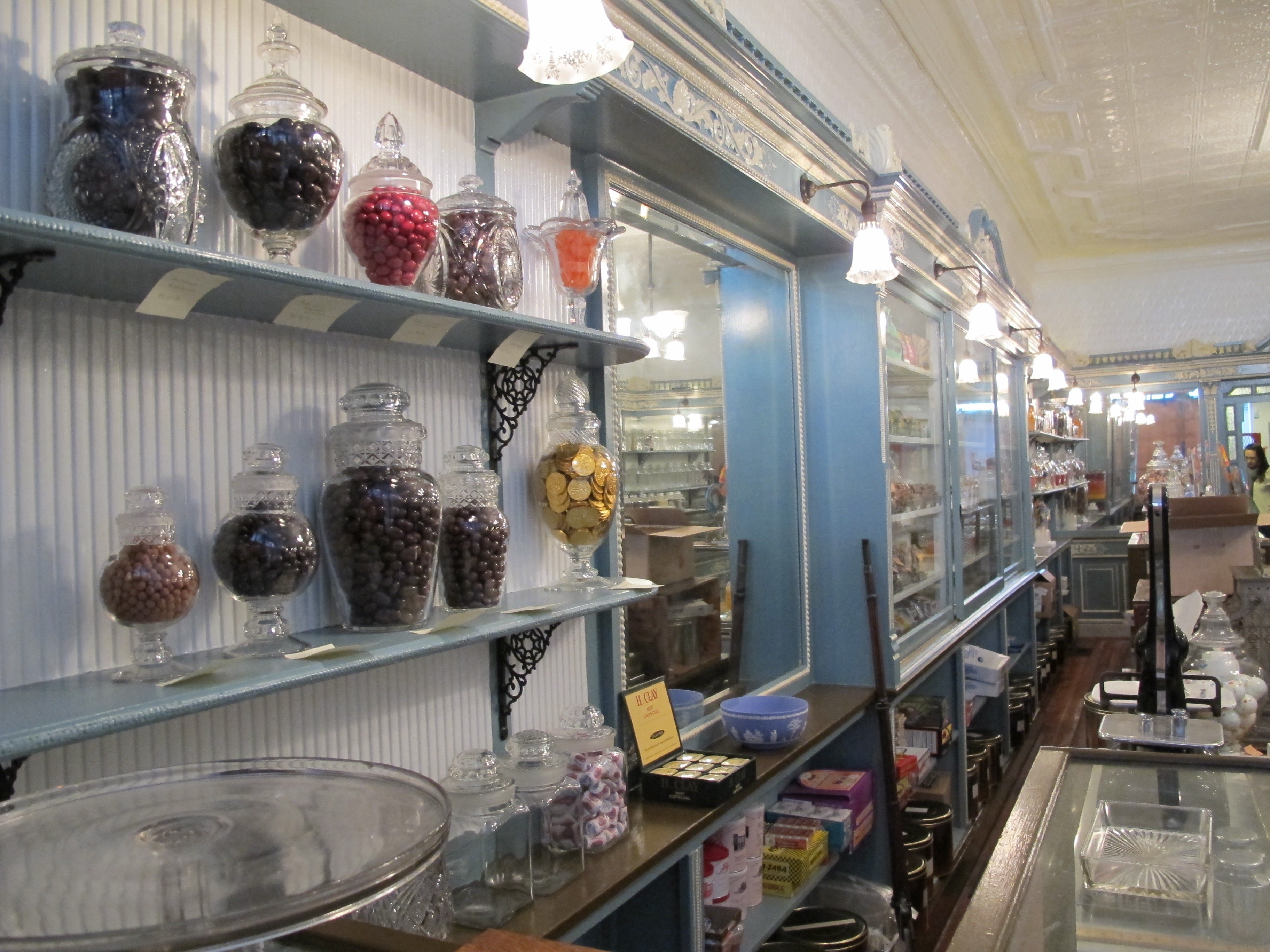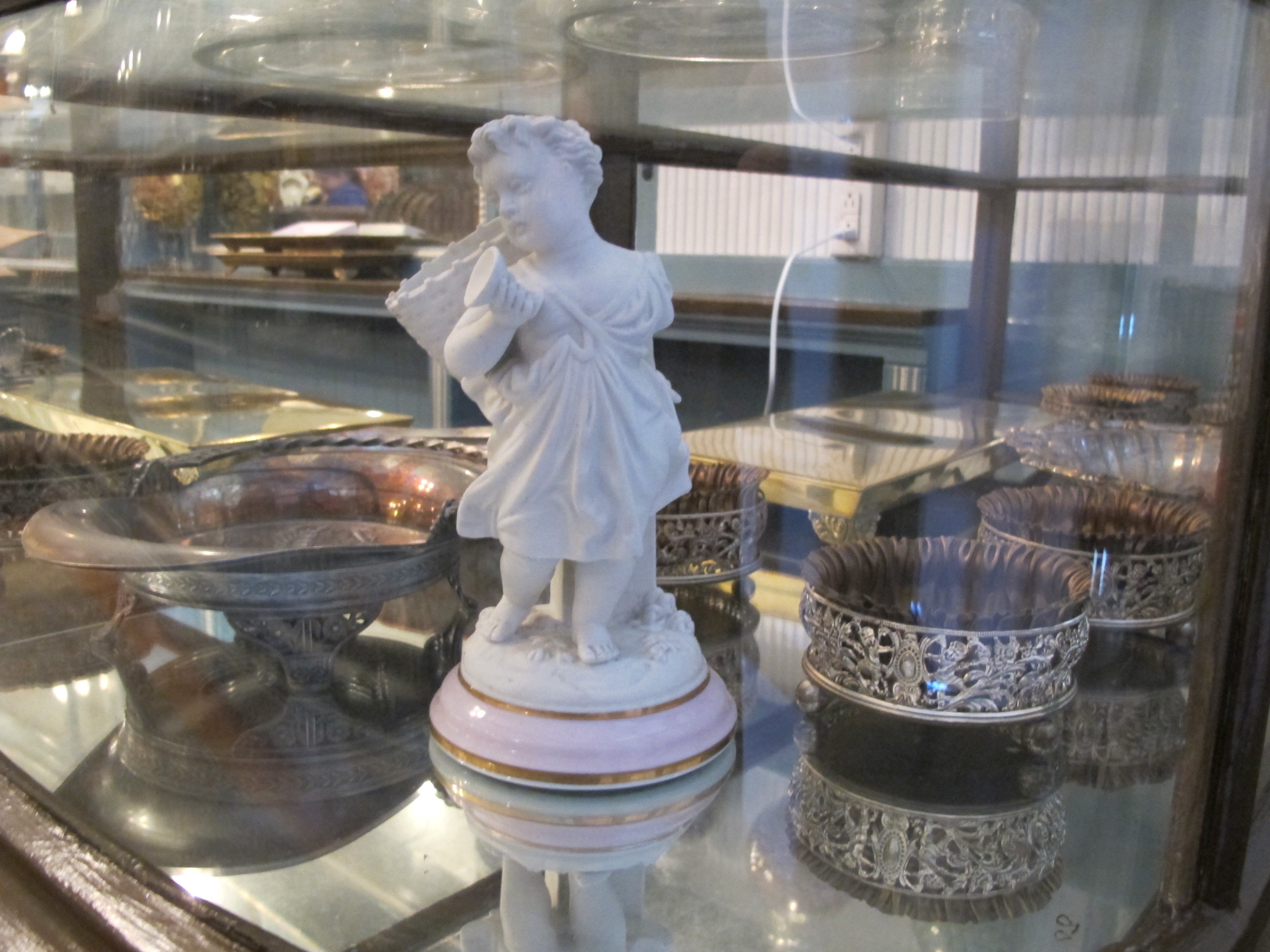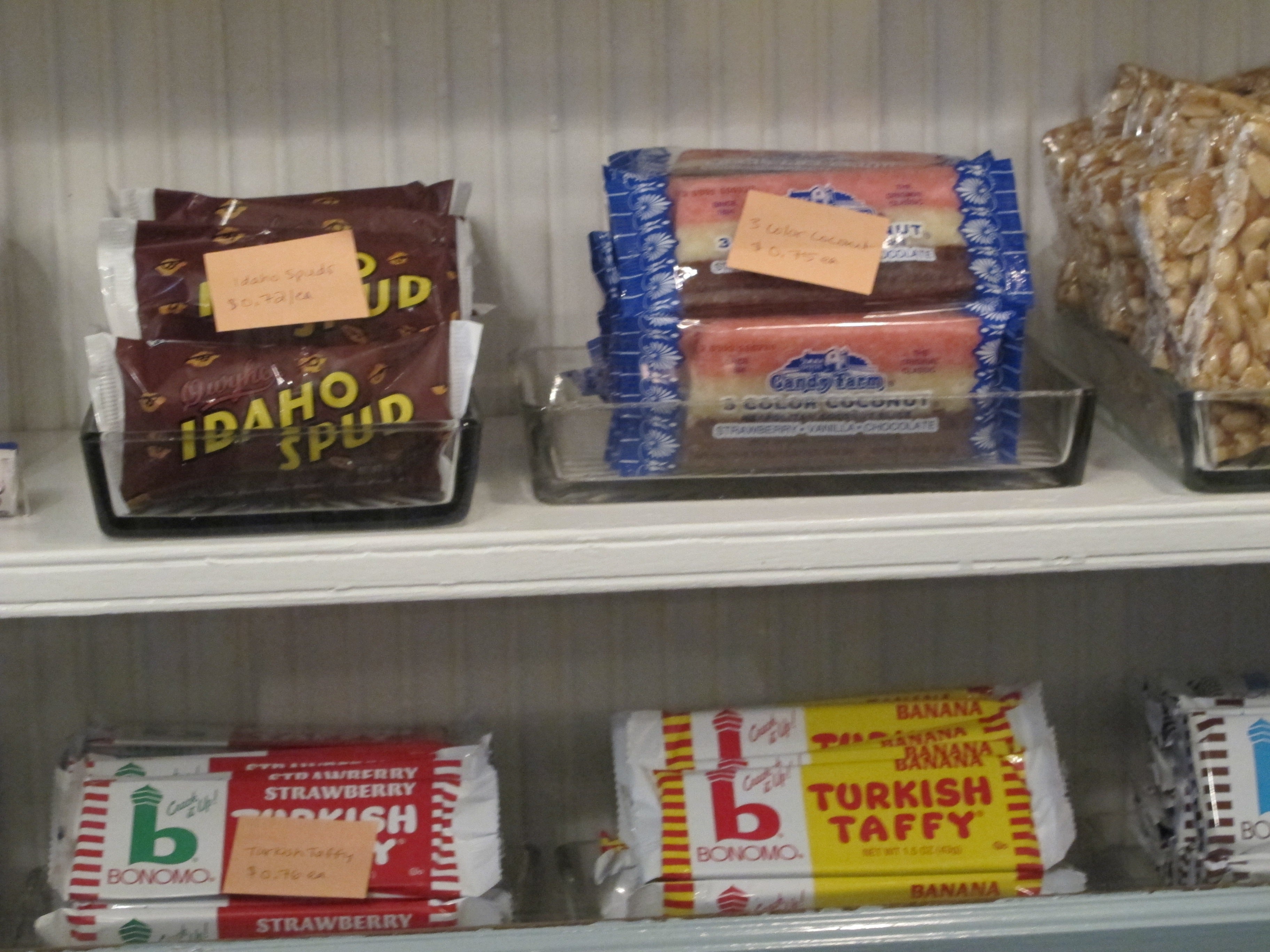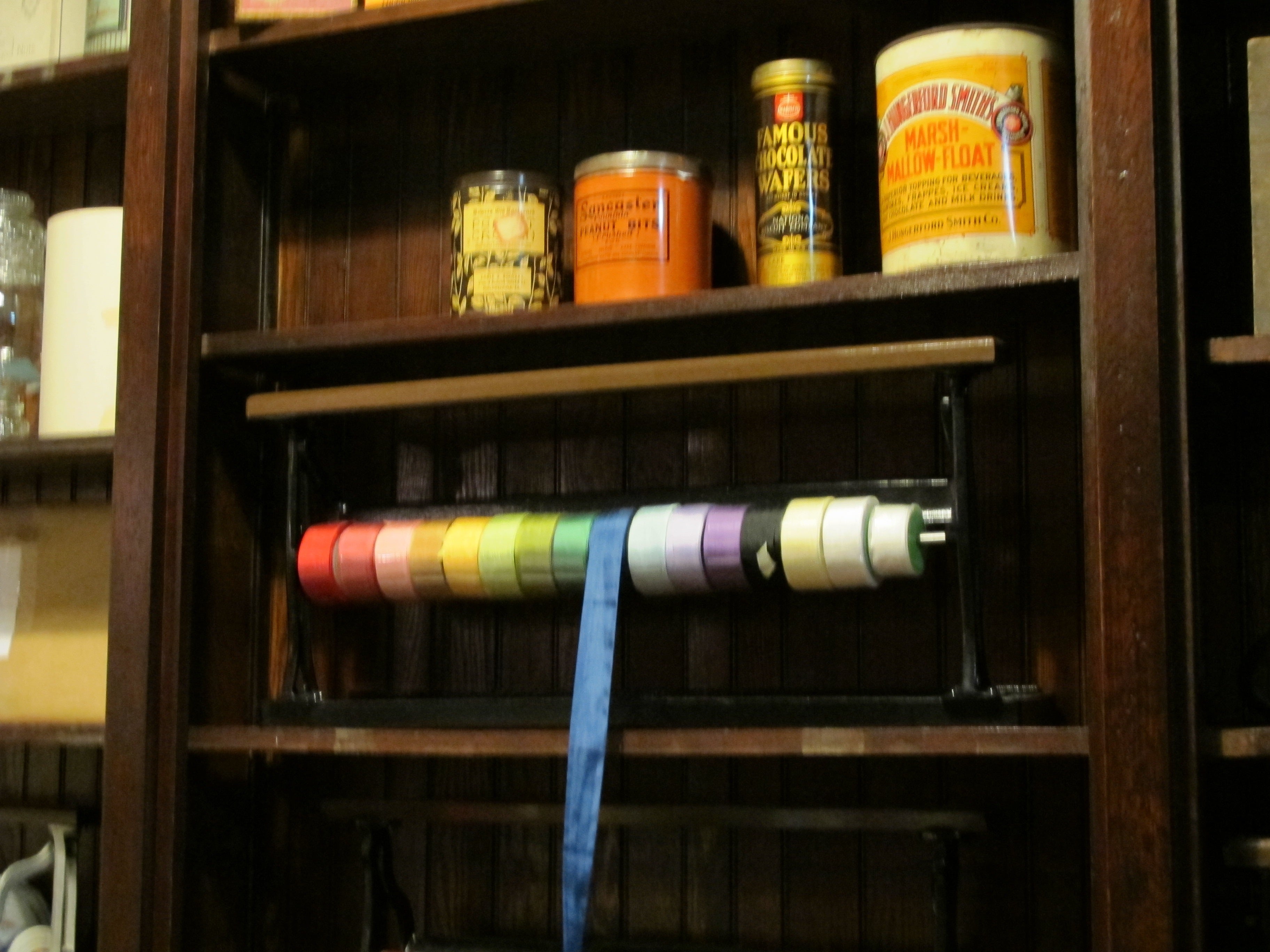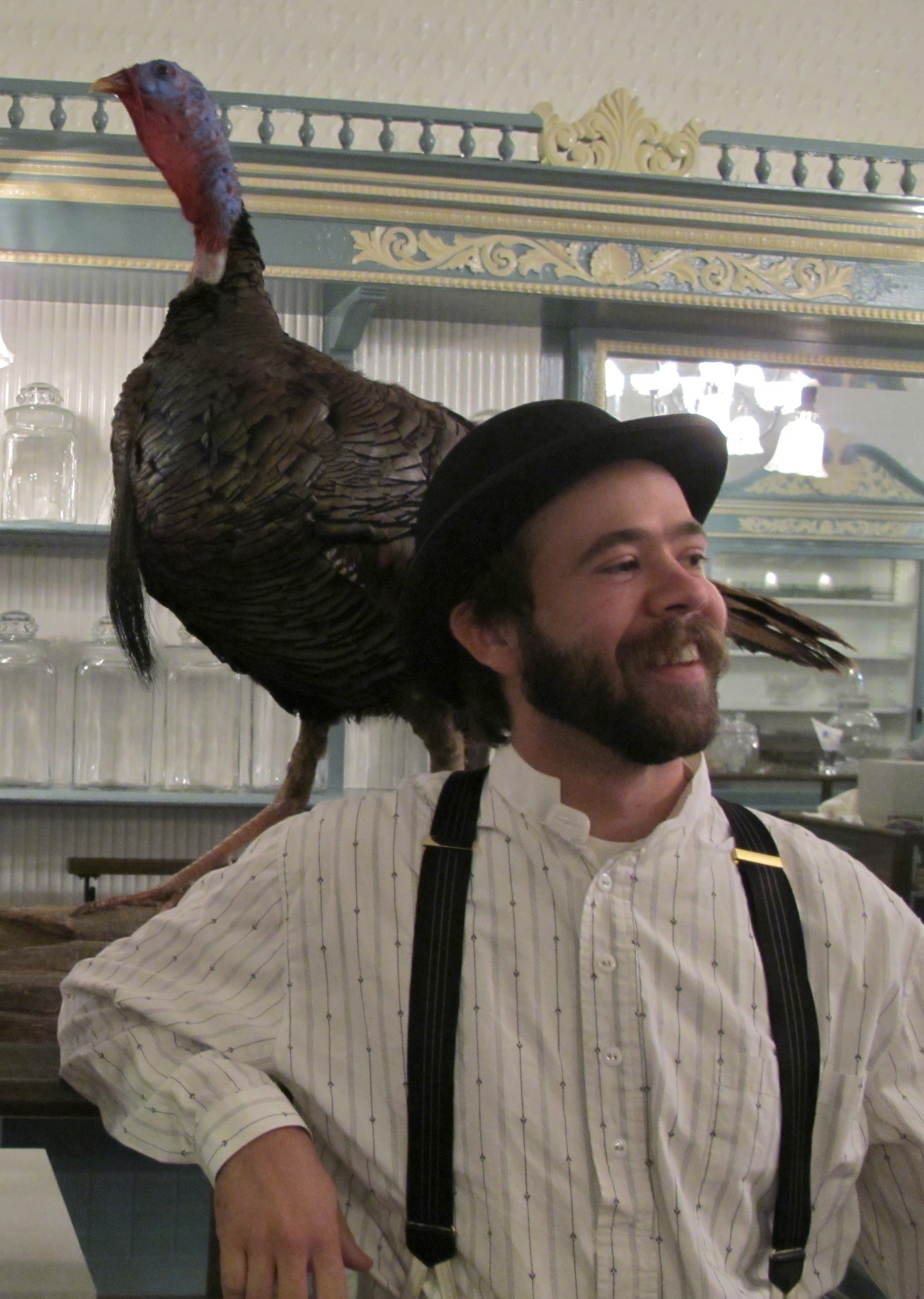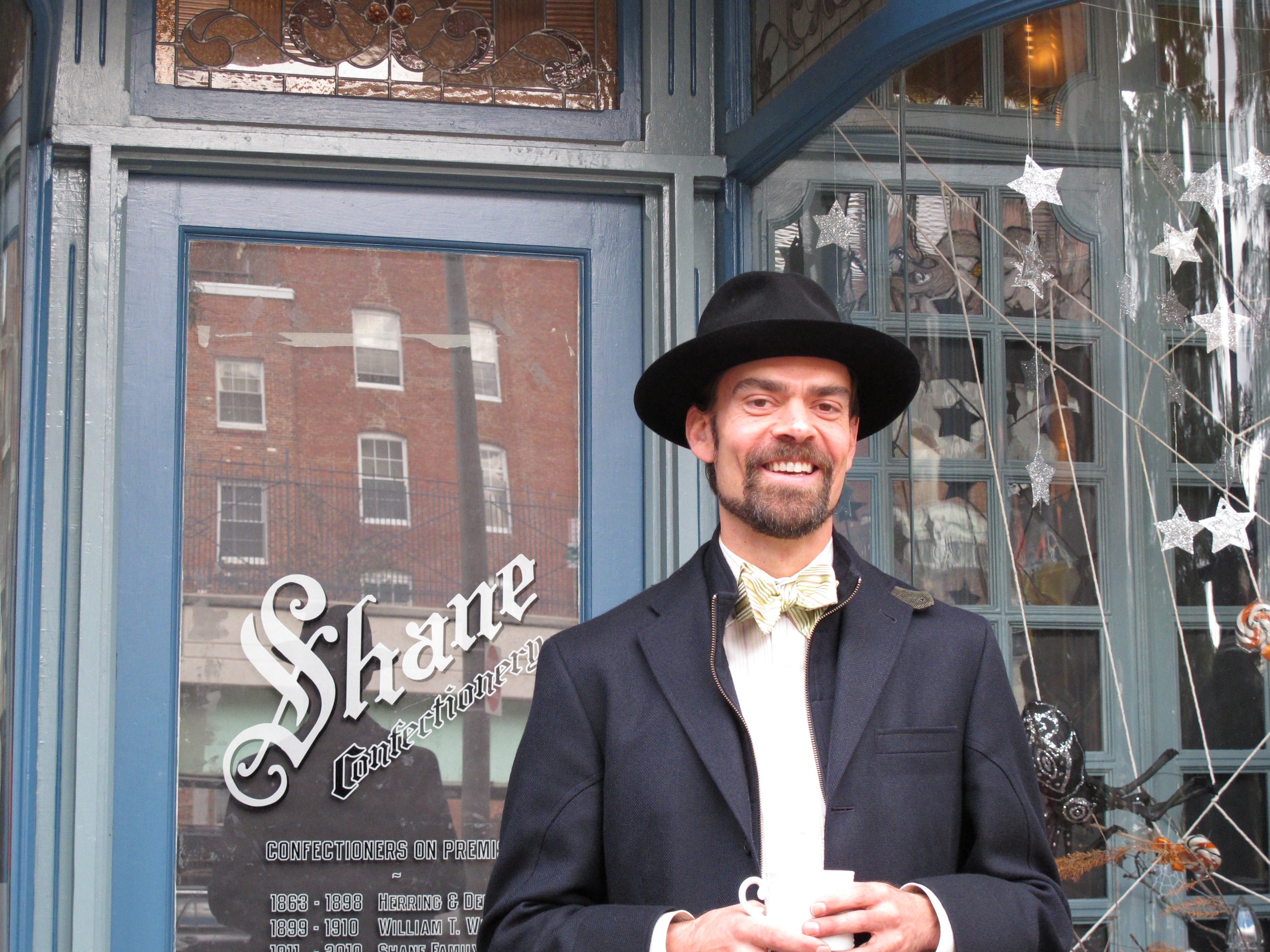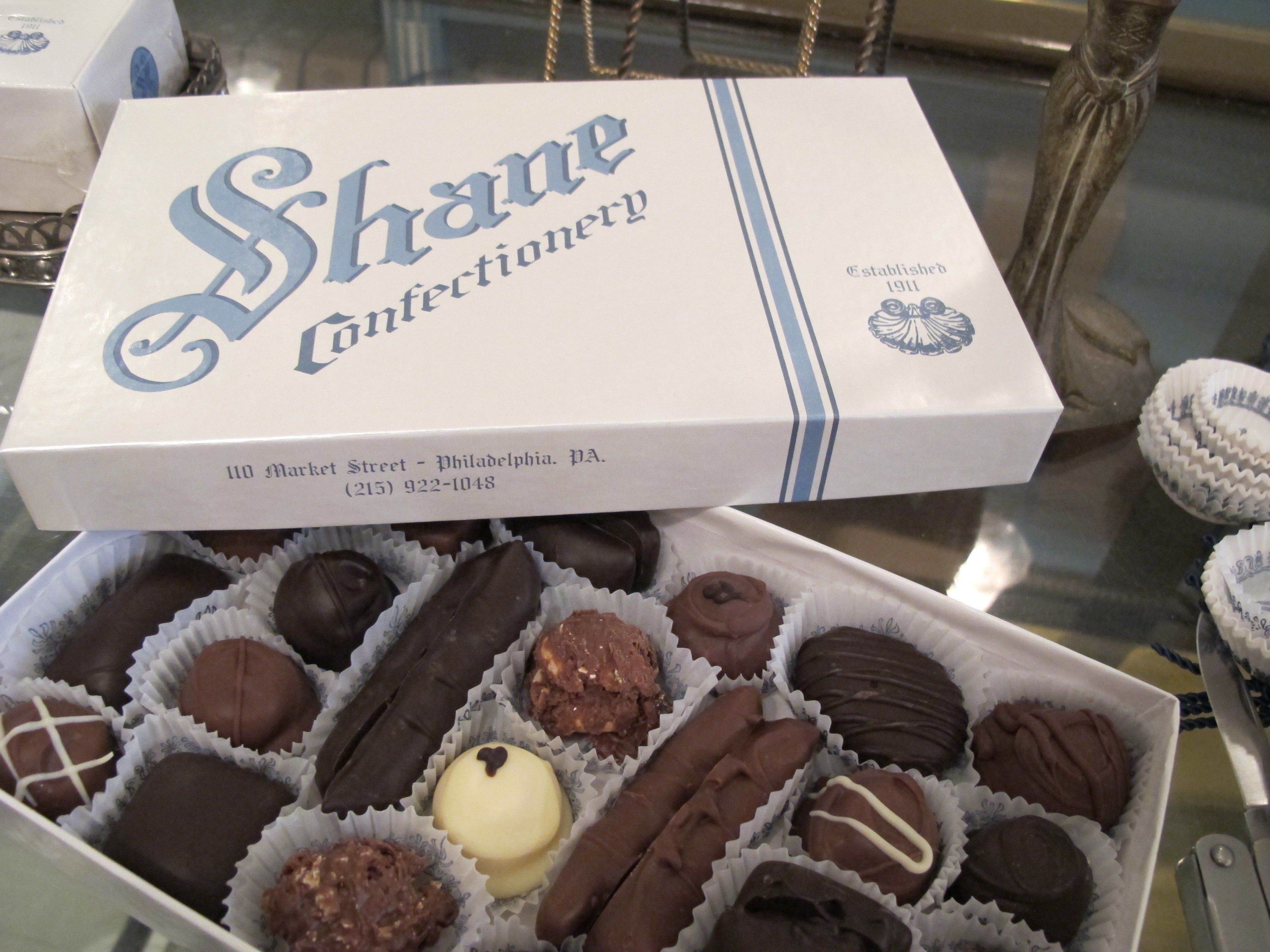Shane, a Philadelphia candy institution dating back to 1863, reopens this month
The candy maker squeezes drops of poinsettia-red food coloring into a copper pot full of molten sugar and corn syrup. When the thermometer hits 310 degrees, she carries the mixture to a waiting congregation of metal molds, their halves held together with rubber bands, and begins to pour.
Head confectioner Davina Soondrum and her crew use oyster shuckers to free cats and dogs, roosters and sailing ships, rats, elephants and Father Christmases from the molds. In red and green, they catch the light like stained glass. But the women have no time to admire them.
Soondrum estimates several thousand will be needed when her two bosses re-open Shane Confectionery – one of America’s oldest candy stores – at 110 Market Street later this month.
Ryan and Eric Berley bought the store from the Shane family in 2010, and the 30- something duo is approaching the candy store with the same respect to the past that is displayed at their old-fashioned ice cream shop, the Franklin Fountain, just a few doors west at 116 Market.
With the building came the Shane recipes, including the one for their famous butter creams that was hand-written by Barry Shane on the back of an envelope. “Local butter, organic sugar, and the best vanilla you can buy,” are the only hints Ryan Berley, 35, gives about the mixture.
The former Shane’s owners sold, but did not make, clear toys. These sweet beauties were in the repertoire of another long-time Philadelphia candy family, the Youngs. Their Brewerytown store closed after Harry L. Young Jr. died in 2006. Most of the Berley’s clear toy molds, stored in labeled, floor-to-ceiling drawers on an upper floor, were part of the Young’s collection.
Made in Philadelphia, the molds have never left the city. Because many confectioners donated this equipment to metal drives during the war, some are quite rare, Ryan Berley says with reverence in his voice. Shane is also among the handful of other local candy makers still operating in Philadelphia, including Lore’s Chocolates on South 7th Street and Chocolate By Mueller in the Reading Terminal Market.
Berley, who is president of the Old City Civic Association, said the neighborhood used to be home to many confectioners. Ships traveled up the Delaware River and unloaded ingredients, including cacao beans, which are still shipped in vast quantities to Pier 84 for regional distribution. Sugar mills were also located on the river.
The nearby river also brought customers to the confectioner’s door. In the days before I-95, the Ben Franklin Bridge and 30th Street Station, the Delaware River was a major travel route, Ryan Berley said. People heading to New York by train, or to Camden to work, first walked down Market Street to take a ferry across the Delaware, then took the same route in reverse to go home.
In his research, Berley found that about 20,000 people each day passed by the storefront back then.
The architecture of the store – which the Berleys have refurbished – strongly references the river.
The outside is once again maritime blue – a color that is repeated in the stained glass windows that top the unusual curved glass display windows on either side of the front door. The stained glass was added in 1911, the year after Edward Shane Sr. bought the store, which another family opened in 1863. The curved glass display windows had been installed sometime in the 1900s. In the 1970s, after someone threw a brick through a window, it was replaced with another type of glass, Ryan Berley said. The neighborhood “old timers” remembered the curved glass fondly, so the Berleys brought it back.
Inside the narrow store, the ties to the river echo again in the shell designs on the tile that lines the display windows and in the ornate woodwork that highlights the stem-to-stern, floor-to-ceiling shelves. The wooden embellishments pop thanks to the work of house and restoration painter Mike McCann, owner of McCann Painting. Everything is a soft white or a Wedgewood blue that looks like the same color used inside Independence Hall.
The store is lined with glass cases that look like they could be displaying jewelry as easily as sparkling and smooth confections. But on the floors above, where about half of the 300 candy varieties the store will sell are made, it’s clear that candy-making is an industry.
“We are continuing a tradition of manufacturing in Old City,” Ryan Berley said.
Enormous copper bowls are heated with gas flames. Silvery trays hang from a long, slender contraption like chair lifts on a ski slope. This conveyor belt will bring different varieties of chocolate past employees who will pack them into samplers.
The Berleys will introduce some new candies to Shane customers. Eric Berley, 31, says chocolate covered pretzels seemed a must for a city so in love with the twisty snack. He loves candies with stories, so one of his “babies” is the Black Jack Stick. “It’s a molasses, rolled hard candy that is dark in color like the black jack sticks of the police,” he said. “It was made with the molasses from the bottom of the barrel – the darkest part.”
Changing tastes of the public led to the creation of chocolate dipped espresso creams, but even these offerings are made with methods and machines from the past. Rather than using an extract, the espresso candies are flavored with beans roasted specifically for Shane’s in Chestnut Hill, and then pulverized with a hand-cranked machine at the store.
The smallest clear toys will sell for $4, the largest for $28. Most chocolates, including the butter creams, will cost $1 a piece, or $28 for a large box, Ryan Berley said. Some chocolates that have especially expensive ingredients or require more labor will cost a bit more, he said.
It’s hard to imagine that The Berley Brothers, who even dress like dapper gentlemen from another time, weren’t destined from an early age to operate their shops.
About three decades ago, their parents purchased a cache of old Saturday Evening Posts, and found the covers beautiful. Their mom began matting, framing and selling the covers out of the family’s home in Media – an enterprise which eventually grew into an antiques business.
The old images of ice cream fountains were never sold. They decorated the Berley’s kitchen.
The brothers opened the Franklin Fountain in 2004, aiming to recreate the 1920s atmosphere reflected in those images they grew up with. The Shane family was still operating the candy store then, and Ryan Berley loved talking to Barry Shane, who is still sometimes consulted on candy recipes. When the Shanes decided to sell, the Berleys thought the candy store would nicely complement their ice cream business. The Franklin Fountain can hardly make enough waffle cones from April through September, but chilly weather makes ice cream sales dip by 75 percent, Ryan Berley said. Candy sales are busiest around Christmas, Valentines Day and Easter.
The purchase of the candy store also provided a lot more space to make the ice cream, cones and baked goods the Fountain sells.
One wall of the building’s sole modern-looking room is lined with silver tanks that could be the tin man’s torso – these are ice cream machines. The flooring is made of recycled tires. The space is flooded with sunshine pouring through an original skylight, discovered after removing layers of roofing. It still leaks a little bit, Ryan Berley says, but he deems that a small price to pay for the ambiance.
If the Berleys were destined to create nostalgic sweet shop experiences, Soondrum was born to make the goods.
At her parents’ urging, she earned a culinary degree from the Art Institute of Philadelphia. But her fascination with candy began much earlier – she watched Willy Wonka and the Chocolate Factory daily when she was between the ages of 5 and 10.
The insides of the clear toy molds were brushed with olive oil before the liquid candy was poured in. And Soondrum and assistants Sara May and Heidi Schriver – who worked for the Shanes before signing on with the Berleys – work very carefully after the sugar mixture has hardened into shapes. Still, some break, sometimes ending up as the sweetener in Soondrum’s tea.
“So many years ago, kids would play with the toys, then wipe them off and enjoy them later,” Soondrum says. “We are adding another chapter to a long-standing story. It’s almost like keeping a folk tale alive.”
Shane’s grand opening, with a ribbon cutting by the mayor, is set for 10:30 am Dec. 5. The Berleys may have an earlier soft opening, perhaps on Black Friday or later in November.
Contact the reporter at kgates@planphilly.com
WHYY is your source for fact-based, in-depth journalism and information. As a nonprofit organization, we rely on financial support from readers like you. Please give today.



